FLAT

THE DEATH OF STYLE FRIDAYS AT FIVE CONCRETE SEEDS IDENTITY FOR SALE
PERFORMATIVE MALE DRINKS
IMPOSTER SYNDROME




THE DEATH OF STYLE FRIDAYS AT FIVE CONCRETE SEEDS IDENTITY FOR SALE
PERFORMATIVE MALE DRINKS
IMPOSTER SYNDROME



This issue started in the bowels of the Media Suite. At the beginning of the semester, we put the issue’s theme to a vote: Would it be Performance, Connections, or Retro? After a much-contested vote, the issue you see before you is the result of close collaboration with our staff. The Performance Issue is an amalgamation of what it means to act, to execute, and to create.
From discussions on the result of what happens when our aspirations translate to performance in our daily lives, this issue showcases how performance is not something that needs a spotlight to be present. Our “Performative Male” photoshoot showed us how social media can label aesthetics as performative. “Practically Perfect” allowed us to take a closer look at the imperfect. What makes something flawless, and how close do we need to look before we begin to see cracks? Finally, we explored artistic performance with “Final Bow.”
We would like to extend our thanks to our incredible staff members. Their dedication to the magazine has been admirable, and we cannot thank them enough for their commitment and countless late nights. We are especially grateful for our Executive Board: Peerawut Ruangsawasdi, Sam Belmar, Leah Kohler, Hannah McMinn, and Molly Martin, without whom this issue would not have been possible. Special thanks to Clare Pacella, Anna Dehmer, and Harrison Kuehl, who stepped into their roles this semester and have gone above and beyond in them.
As we pass the proverbial baton to the next Editors-in-Chief, we would like to thank you for joining us for the past two semesters. It has truly been an honor serving as your Editors-in-Chief, and we are so excited to see what comes next.
For now, we are thrilled to present to you The Performance Issue.
With appreciation,


Portia Dai and Grace Rivera Flat Hat Magazine Editors-in-Chief

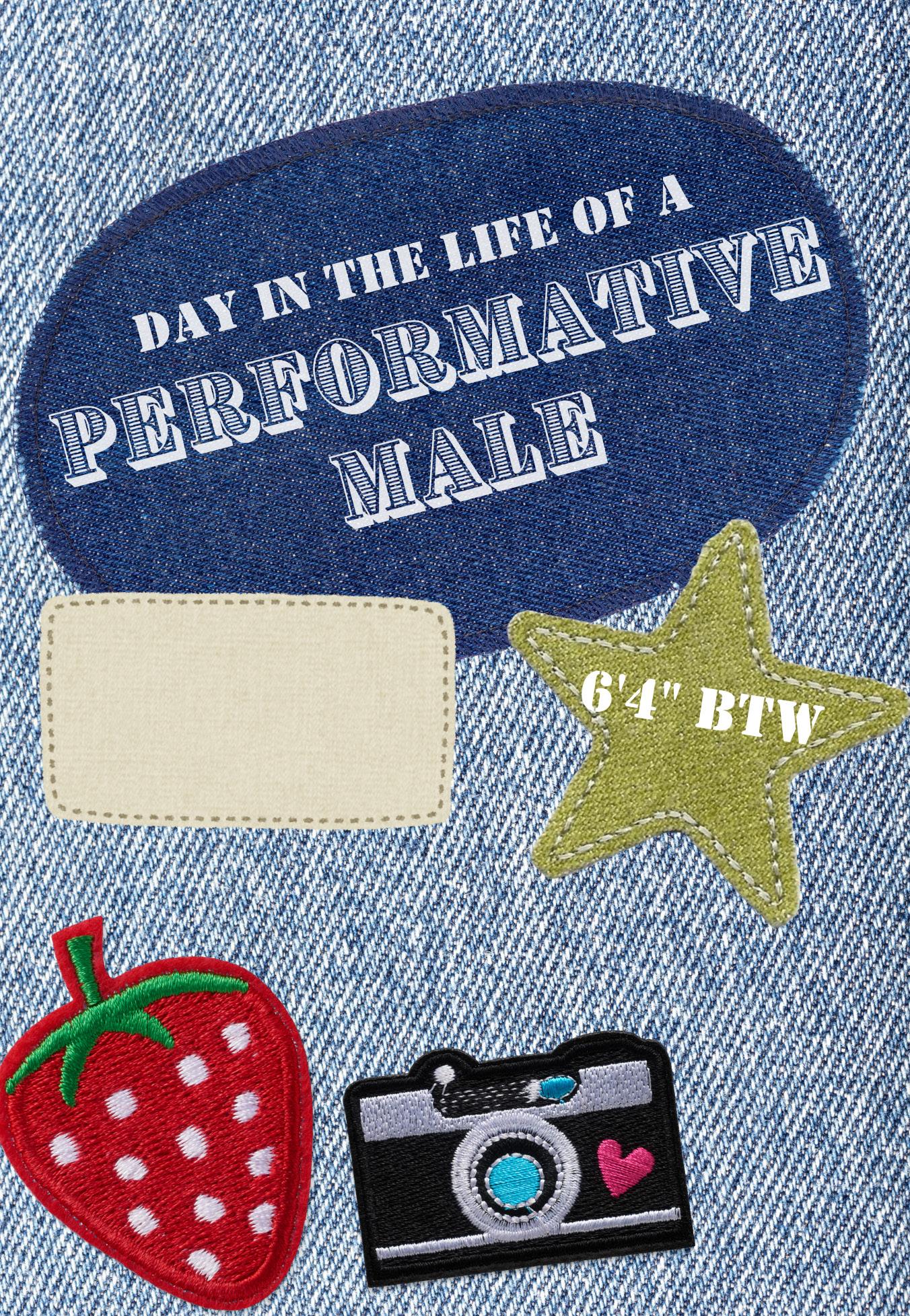
I wake up early, 6 a.m. to be exact, with the sun streaming in through the windows of my Brooklyn apartment. My bed is perfectly made, sitting right in the middle of my room with two main pillows and four throw pillows on top. (I’ve got to have room if I were ever to have a guest, after all.)
The morning starts as it always does, with a new entry in my dream journal. I once read that dreams are the connection to your body’s total and absolute desires, and I have held on to that fact ever since. In my journal, I write that I dreamt about a wildflowercovered field, with a lone tree in the middle (a perfect spot for reading), and a blue sky filled with puffy, white clouds overhead.
That was an absolute lie. In reality, the dream was about a rubber duck chasing me through the streets of Gotham City, but that doesn’t matter. Spiritually, I dreamt of the tree.
I stretch out of bed and find my way over to the tiled, mid-century bathroom where I perform a 12-step skincare routine. I don’t exactly know what odd concoction I’m putting on my face, but the women at the small, local skincare shop across the street told me it would be perfect for my skin (which was already as soft as a baby’s).
After the skincare routine, I put on my baggy pants, baby-green button-up shirt, loafers, and women’s sunglasses. I pack my Strand bookstore tote bag containing a Walkman, wired headphones, and a copy of Normal People.Finally, I begin my walk to the nearest authentic matcha-serving, vegan café.
My café of choice is where a bodega used to be. I complain about the rapid gentrification of the city to the girl next to me in line.
“Don’t you know they’re forcing out businesses and people who have been here for years?” I say. (I had never been to the bodega when it was here. I pay $3500 a month for a studio apartment.)
The girl in front of me orders a strawberry banana oak milk matcha and an ube croissant donut.
“That’s MY order!” I say. (I’ve never had it before.)
I order next, getting the same strawberry banana oatmilk matcha and ube croissant donut. It costs $19.67. I pay with cash from my recycled wallet that I thrifted from a consignment store. It cost $35, but if anyone asks I’d say it was $3.50. The girl leaves relatively quickly, so I spend the rest of my morning hiding my work for BlackRock with my copy of NormalPeople . While buying up single-family homes, I read approximately five pages by noon.
Then, I realize I must make my way to all of my three incredibly essential appointments I have scheduled for today. My first appointment is therapy, obviously. I head home first, filming a “Get Ready With Me for Therapy” video, where I change into a new outfit, review the matcha, and plug three different skin care brands that sponsor me.

When I get to therapy, for some reason, my therapist insists on discussing topics that I have no interest in, like narcissism, my fear of being alone forever, and my need to mask true emotions and beliefs. It’s all so stupid. (Doesn’t she know I’m just here so girls think I care about myself?)
My next appointment is pilates, obviously. How else do you think I maintain this physique? Other men think it’s so stupid, but I personally believe it’s a much better workout than lifting or running or anything. (I lift and run every day.)
The pilates studio, draped in pastels and the melodies of Laufey’s music, is one of my favorite places in the city. I greet my instructor by name; she smiles back. I’m the only man in the class, but I don’t let that stop me. I complete all of the exercises with skills which are unparalleled to the rest of the class.
After pilates, I head to the spa. I sit in the sauna for a while, to shock my system after the heat (or whatever it’s supposed to do). After the shower, I head to the spa room for my facial. I can’t have any wrinkles appear on this 25-year-old face after all. The facial

lasts an hour, during which I fall asleep, and when I wake up I feel even younger than I did this morning!
After the facial, I remember I have to go into the office this evening. I sneak in, acting like a confused tourist before changing into my business casual wear. (I can’t let anyone know I secretly work for an evil corporate company.) At work I eat the catered meal they give us, making sure to loudly boast about my veganism in front of everyone, before heading back to my desk and half working for the rest of the day.
I bike home because the subway is way too gross this late at night, stopping for dinner at a local expensive, gluten-free, vegan, Greek-Mexican-Indian-Thai fusion restaurant that opened up a few blocks from my house. I order an aperol spritz and sit alone on the patio, reading a grand total of five pages while I eat.
After dinner I head home, and as I must ensure my house is as spotless as my face, I clean the entire thing from top to bottom. Once done, I’m ready to shower the stink of the city off, crawl into bed, and watch a TikTok feed of thousands of men even more performative than me.

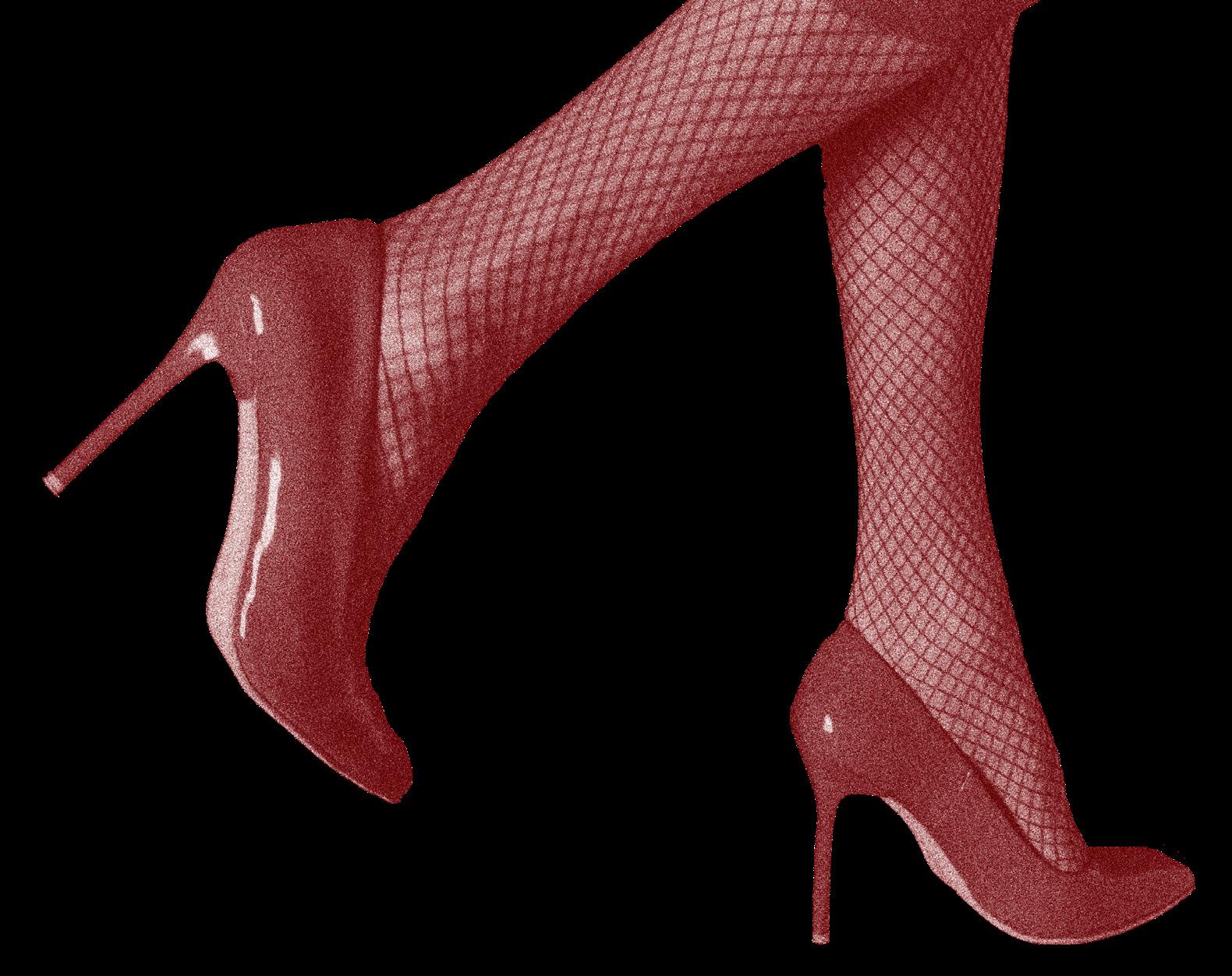
Story by Grace Ki Rivera ’26
Design by Mali Bucher ’29
A group of girls, wearing jeans and “going out” tops, walk into the bar, and they are greeted by 20 other girls wearing the same thing, just in slightly different variations. Maybe a different jacket, a different bag, a different heel. It’s expected, put-together, especially if you’ve paired it with a statement or name-brand piece of jewelry. The repetition is striking. Walking into a bar feels less like arriving and more like stepping onto a conveyor belt of sameness. Style, in its fullest sense, feels absent; what we call “dressing” has become assembling.
My friend Ella’s style makes you see how deeply we’ve mistaken taste for style. I don’t mean she dresses well; plenty of people do that. I mean that she has style in the rare, nearly extinct sense of the word. She wouldn’t be caught dead in a “basic” outfit, whatever that even means anymore. I’ve seen her in jeans a couple of times, but even then she’s wearing something architectural on top, a draped silk corset, chandelier earrings that could double as weapons, a belt so ornate it borders on conceptual art.
I’ve seen her preplan her outfits. It is a science. Like she’s trying to solve a problem. Her clothes have narrative arcs. There’s texture, risk, surprise. If she looks effortless, it’s only because effort, to her, is part of the fun.
Being around her makes me realize how few people actually style anymore. Most of us simply assemble.
When I told Ella what I was writing, she had a lot to say. “I love reading about trend cycles, when certain styles were popular originally, who popularized them, what kinds of people wore them, and how long they took to come back around, and how that even happened. Anything that gives Gen Z a ‘gotcha.’ We like to pretend that we invented everything, every style, every different way to wear a piece of clothing, every trend. But we never did. Fashion is so cyclical. It’s all been done before, whether it was in a different culture or a different decade.”
Still, something feels different. The cycles spin faster,
Participation has increased, sure, but the depth and nuance that made style meaningful is harder to achieve.

In the 1970s, there was Roy Halston Frowick, more commonly known as Halston, whose sleek disco clothes defined a new kind of style. Halston’s muses, the Halstonettes, wore silk dresses and perfectly cut jumpsuits to Studio 54. The glamour felt purposeful. It had cohesion and a sense of identity. Even at the height of celebrity and spectacle, the clothes communicated individuality, not just a label or a template.
When Vivienne Westwood sent safety pins and bondage pants down a runway, it wasn’t just a look. It was a revolt against respectability, against consumption itself. Punk style wasn’t about looking good; it was about refusing to. The ripped shirts and DIY patches carried politics, not polish.
Now, when people reference “punk,” it’s shorthand for fishnets and glitter. When people reference “disco,” it’s flared pants and Stevie Nicks (which, to be fair, is a wonderful choice for a ’70s style icon). The symbolism is stripped out. What we have now isn’t style. It’s an aesthetic.

Aesthetics can be expressive, even beautiful, but they are also structured by algorithms and expectation. They are what happens when self-expression meets optimization. A moodboard turned outfit, an outfit turned brand. Every few weeks, a new aesthetic blooms on TikTok. Think: coquette, tomato girl, clean girl, blokecore, and just as quickly, it withers. Each comes with a starter pack: a shoe, a hairstyle, a filter. You can participate; however, there’s little room for improvisation. To achieve the look, you assemble the parts.
Style used to be a conversation between you and your clothes. Aesthetic is a one-way mirror. You pick a niche, and the niche tells you what to
There’s a uniform for every kind of uniqueness now. Making every niche distinct makes everyone’s


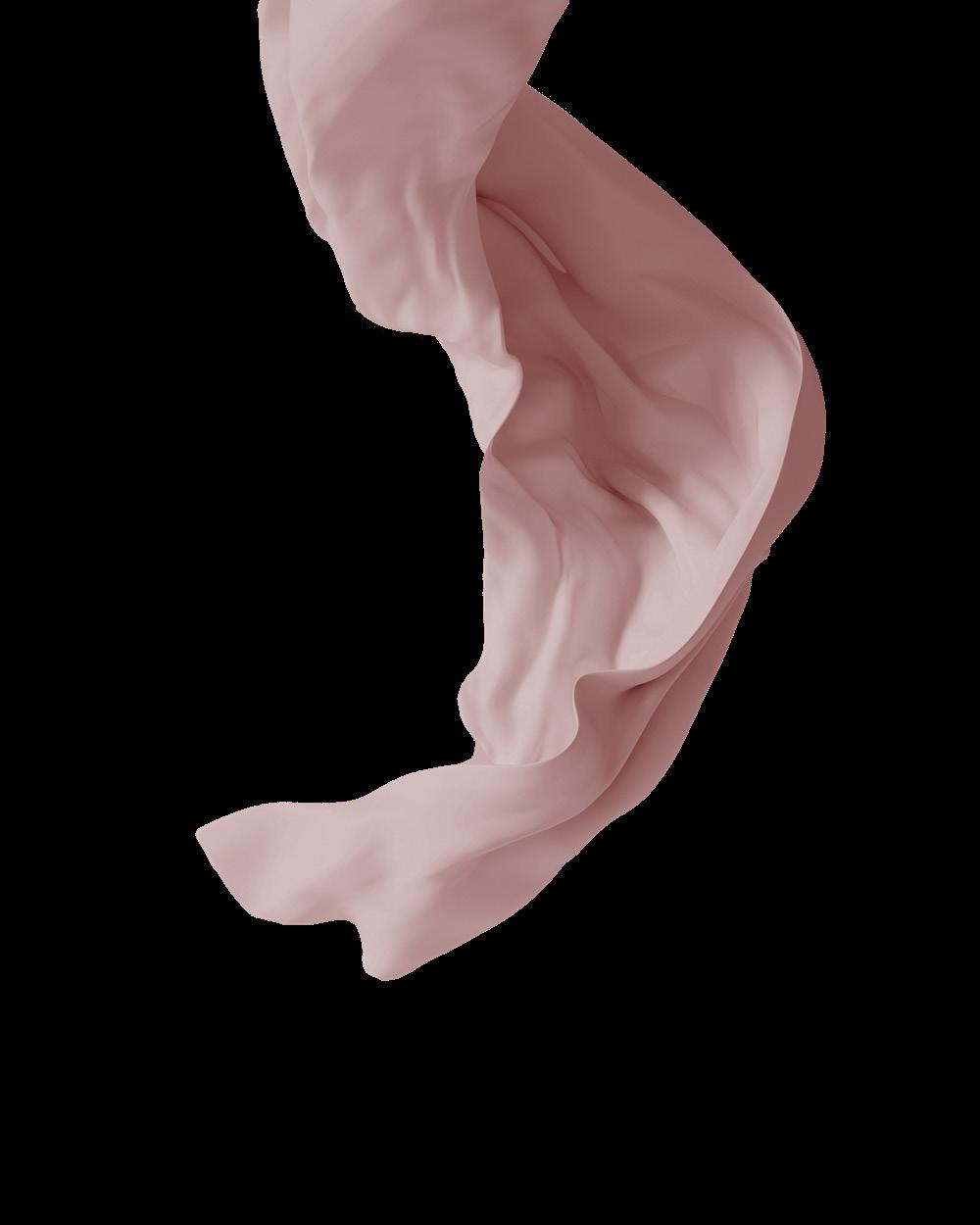
supposed uniqueness instantly recognizable, predictable. Aesthetics are inherently terrible; some people thrive within them, but the risk and evolution that defined style have become harder to access.
The irony is that all of this “personal branding” began with the promise of self-expression. Social media told us we could define ourselves by what we wore and when we posted it. But the more visible we became, the less experimental we got. Visibility is terrifying when you feel like everyone is watching.
Aesthetics are safe that way. They have rules, palettes, and pre-approved pieces. They tell you what to buy, where to shop, and which references to cite. You can’t really get it wrong. Style, on the other hand, is messy. It takes bad outfits to get to good ones. It takes intuition, risk, and the occasional fashion mistake that makes you cringe in five to 10 years. Aesthetics protect us from that.
I often think about the difference between a style and style, a distinction Ella made once when we were talking about this very topic:
“Having style,” she said, “is knowing what you like, what you feel good in, and how to combine pieces to make it look good. But specific styles still exist; they just live alongside that. Like Malloryheartsyou — she’s huge into ’80s goth fashion. She always dresses ’80s goth, but it’s still her. She can dress it up for fancy events, down for casual days. It’s cohesive because it’s hers.”
Real style is interpretation, the starting point instead of the endpoint. They’ve become the endpoint instead of the starting point. Once you’ve defined yourself by an aesthetic, you stop evolving. A style is static. Style is alive.
The compression of time is contributing to style’s death. The trend cycle used to move in decades. Now it moves in weeks. Trends don’t fade; they implode. There’s no room for ownership, only participation. And participation requires performance, endless consumption, endless content, and endless proof
When I scroll on Pinterest, I see collages of perfection: the beige “clean girl,” the denim “indie sleaze” revival, the lavender “coquette.” I rarely see the weird pairings, the odd thrifted finds, the lived-in outfits that break the expected formula.
The idea of a “personal uniform” has become aspirational, though, even that has been aestheticized and not a practical shorthand for confidence, in a minimalist performance of restraint. The goal isn’t to have taste; it’s to have consistency. Consistency photographs better.
Here’s the truth: I’m often that person. I’m part of the pattern I’m critiquing. I’m in the jeans, the black top, the “going out” shirt that I’ve seen on 20 other people before me. I preplan, I experiment with my outfits, but I’m also predictable and sometimes entirely unremarkable. I’m not an exception; I’m part of the rule. And, just like that, the repetition isn’t just noticeable. It makes style feel almost fragile.
We talk about the “death of style” like it’s a cultural tragedy, and perhaps it is; however, it’s also a natural outcome of extreme visibility and instantaneous consumption. Aesthetics seem to be an inevitable consequence of a culture where every outfit can be photographed and circulated in seconds.
I don’t think style is truly gone. It’s harder to cultivate and riskier to perform. It lives in those who are willing to stand out before they are considered to look good, in those who trust their eye, in people like Ella, who never cares whether her outfit fits a category, only whether it fits her.
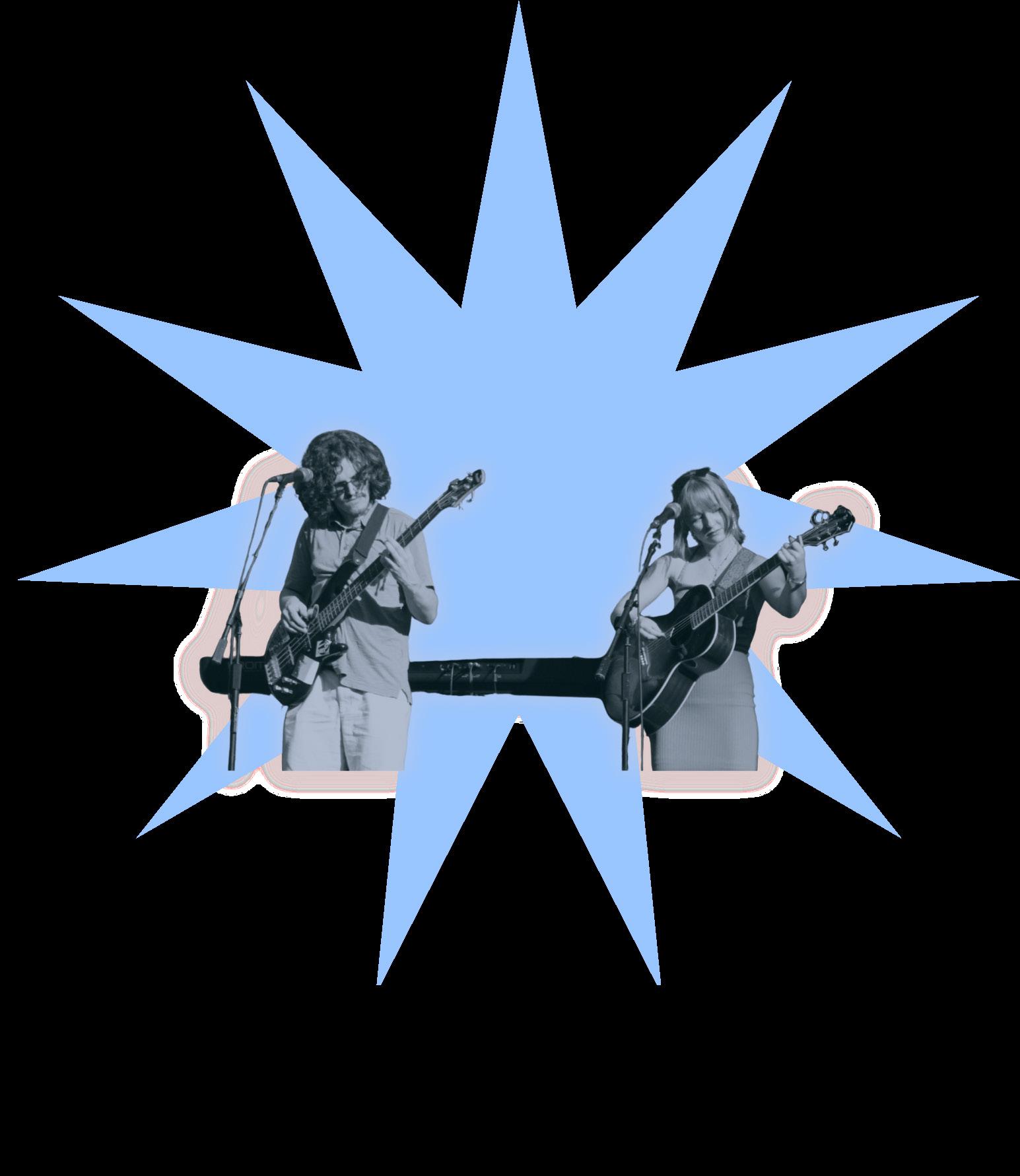
Aug. 29, AMP kicked off the semester with a live music series: Fridays at Five. Every Friday morning, a stage appeared on Sadler Terrace, waiting patiently for the arrival of its performers. As the clock approached 5 p.m., students, professors, potential new students, dog walkers, and passersby gathered around the Sadler Terrace to watch an hour of free live music and devour clouds of cotton candy.
The event series featured six performances over six weeks, featuring both student bands and outside artists. Every Friday, 1-2 bands or artists would step up to the stage to play an hour of live music. In addition to hosting the performances, AMP dusted off its carnival-style machines and offered free cotton candy and popcorn to students.
Fridays at Five had been a popular and consistent event in the past, but AMP stepped away from the recurring event for a few semesters before breaking the dry spell in the spring of 2025 with two trial runs to gauge students’ interest. The event’s long-awaited return took place Friday, Jan. 31, when indie band Coastal Club traveled from Cincinnati down to Lodge One. April 18, student-run band Plastic Island took to the stage on Sadler Terrace. After much success last spring, AMP’s Live committee and Homebrew committee began planning the fall series on a larger scale.
To prepare for the fall 2025 semester’s itinerary, Live started emailing artists and asking for price estimates in April. The committee coordinated with outside artists Cinema Hearts, hyejin, and Acelia. To find these artists, Live considered smaller artists that it was already familiar with, in addition to bands located in Washington, D.C. or Virginia.
“It was partially like artists that we already knew, but then to find Cinema Hearts, I was kind of looking at like D.C., Virginia bands and listening to them, and again, just like cross-referencing lists of bands to be on the lookout for,” Live committee member Ava Canade ’28 said. “But then also, like, what do we think students at William and Mary want to listen to?”
Canade took a large role in contacting potential performers, including hyejin.
“So, like, hyejin, I had listened to her music on Spotify already, and I was like, ‘This could work,’” Canade said. “And I was like, ‘I’m just gonna send an email and see what happens.’”
Rather than sending out emails to outside artists, AMP’s Homebrew committee contacted performers differently. Homebrew Chair Elinor Maloney ’28 explained the committee’s goal of centering student artists.
“Homebrew is the committee of AMP that’s really focused on student talent and providing platforms to groups of students who might not otherwise have a platform,” Maloney said.
Using a combination of Instagram, Student Happenings emails, tabling, and YikYak, Homebrew advertised auditions in search
of student talent. To audition to perform at a Homebrew event, students submitted a 1-2 minute video of what they planned on showcasing. In the case of Fridays at Five, Homebrew hosted The Operators, Rush Hour, Mugshot, Clockwork, and Sycamore, all of whom the committee contracted within the first few weeks of this semester.
Both Live and Homebrew focus on hosting live entertainment, whether it is a speaker, a student dance club, a musician, a comedian, or even a magician. AMP members recognized that when giving someone a stage and a microphone, the performer can ultimately say whatever they want. Despite this concern with live performance, Canade and Maloney continued their mission of platforming both inside and outside talent.

“Ultimately, you can’t control the artists, like that’s not how it works,” Canade said. “I think it’s just a common worry with any sort of live performer, whether that’s a comedian or a music artist or like a magician or something else ... bringing anyone in, there’s always that possible concern.”
Maloney elaborated on Canade’s point, concluding that AMP’s performers nonetheless have the freedom to express themselves however
“I could be nervous about people saying things, but, in the end, I can’t stop them,” Maloney said about potential performers
Sadler Terrace, with its picnic tables and big green lawn chairs leading up the stairs to the Sadler Center, stands at the heart of student activity. With such a public venue in the middle of the bustling nature of students’ Friday evenings, Fridays at Five cultivated a special environment for both its attendees and anyone who happened to walk by.
For students like Amalia Lewis ’28, who attended all six of the shows, the environment and timing were important factors in her involvement.
“It was a very relaxing, chill environment,” Lewis said. “I enjoyed that, since it was at five o’clock on a Friday, where I don’t really have any clubs or work to do, I could just kind of listen to the music and not think about anything else I had to do.”
Adding to the environment’s appeal and marketing was the venue’s publicity and openness.
“It kind of markets itself, being so public,” Maloney said.
Lewis also enjoyed the public nature of the performance series, which she said made it more accessible for students, even if for only a few minutes at a time.
“I think that because it’s in such a public space, not everyone knows about it, but the way they have it out there, people just kind of show up and listen for parts of it, or they’re really dedicated and find their spot to watch early,” Lewis said. “And I like that, the way they lay it out. You can kind of come in and out of it, and you’re not so pressured to stay.”
The final performance of the season occurred Oct. 3 during Family Weekend. With sunny skies overhead, student bands Clockwork and Sycamore performed to a large audience consisting of students, parents, siblings, and prospective students.
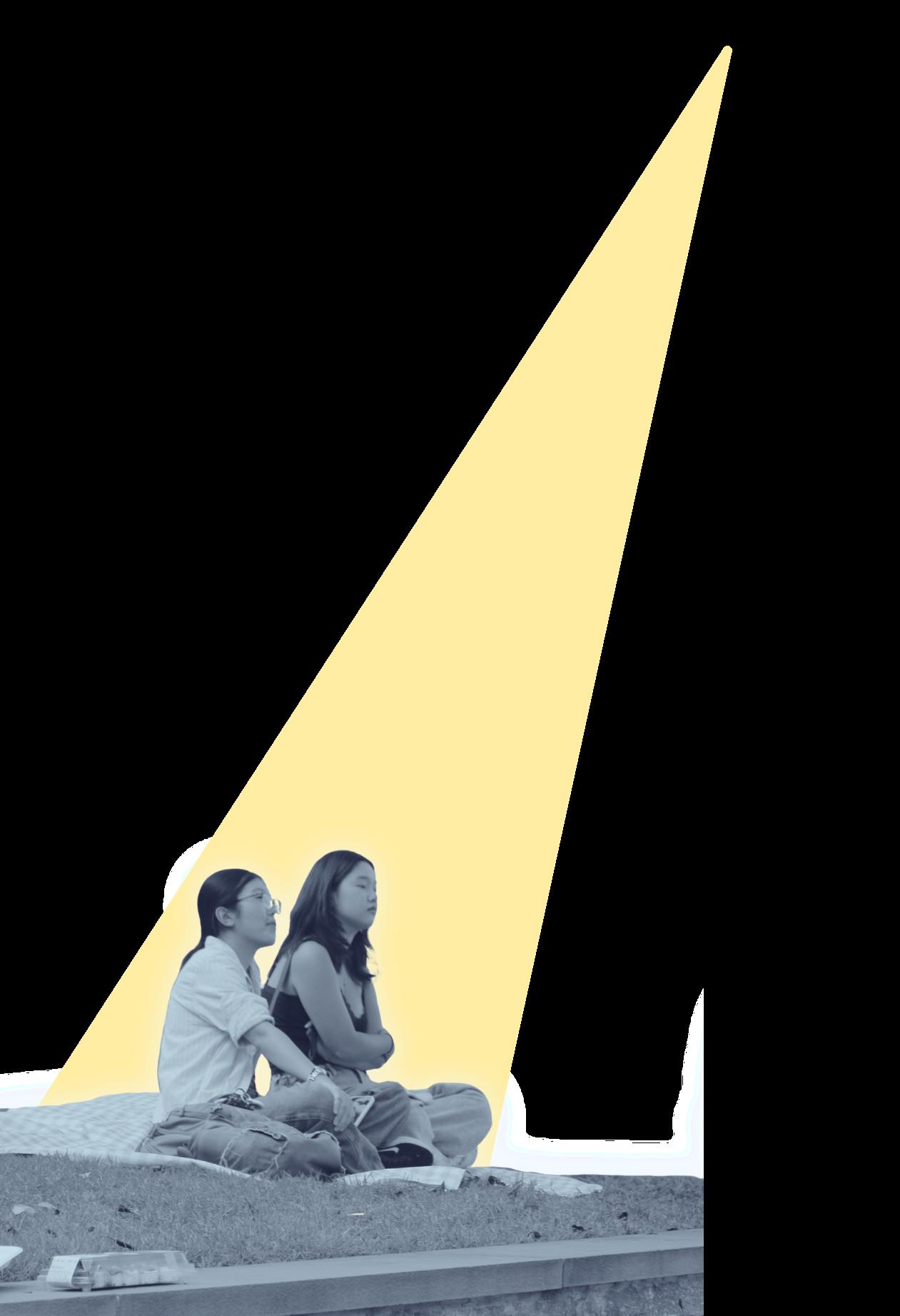
“The performers were good, they were playing good songs,” Maloney said. “The parents looked like they were having a good time, the students were having a good time.”
The event series served as a method of outreach into the community, bringing people together with live music, regardless of whether audience members originally planned on attending. Fridays at Five also offered outsiders a view into the College’s atmosphere and community life. Canade experienced this phenomenon while checking people into the event.
“I went up to a girl and her dad, and I scanned their TribeLinks, and both of them were like, ‘Oh, we just finished a tour [and] we wanted to see what was going on,’” Canade said. “And they stayed for the whole hour, which was also kind of fun to see that we were getting people that weren’t just students. And being able to show some of the other things that go on at William and Mary, just besides the academics.”

If there’s a style of dance you’re looking to get involved with, good news! There’s probably a group on campus for you. From educational to competitive, dancers of all levels can find a place to thrive. The College of William and Mary offers clubs and teams in various styles of dance, including, but not limited to, tap, ballet, modern, bhangra, salsa, hip-hop, Irish, Afro-Caribbean, line, and ballroom. I had the chance to sit down with members from Pointe Blank Dance Company, Syndicate Hip Hop Dance Team, and Orchesis Modern Dance to get further insight into the audition, rehearsal, performance, and behind-the-scenes processes of each group.
Pointe Blank Dance Company is a student-run organization specializing in jazz, ballet, tap, contemporary, lyrical, and hip-hop. Within Pointe Blank, there is a smaller tap company that holds a separate audition process for those interested in joining. The company has around 50-60 members, varying by semester. The general audition process occurs once at the beginning of each semester, consisting of a warm-up across the floor followed by a dance sequence taught by members of the company. After being an active member for at least one semester, dancers can volunteer to choreograph up to two pieces for the semesterly performances.
Dancers rank the pieces they want to participate in and are generally able to be in any piece they would like, but those interested in tap pieces

have a separate audition. Each piece rehearses for an hour weekly on a fixed schedule, so dancers often choose their pieces based on their availability. Semesterly performances consist of approximately 18-20 dances in various styles, culminating in an allcompany finale piece.
Victoria Stoner ’26 spoke about her time in the company. As someone who has danced since she was three years old, Stoner joined Pointe Blank her freshman spring and has since participated as a ballet dancer and contemporary choreographer, as well as danced in other numbers. She served as the group’s social chair during her second and third years and has regularly participated in other relaxed traditions with the company. Some of Stoner’s favorites include pre-rehearsal dinners, big-little clue weeks, and performance watch parties.
“Pointe Blank has given me the opportunity to expand on what I can do as a choreographer [and] as a creator, and that’s something I’ve really enjoyed about the company,” Stoner said.
Syndicate Dance Team is made up of approximately 40-50 dancers specializing in hip-hop. This studentrun group also puts on semesterly performances consisting of 15-20 student-choreographed dances. Additionally, Syndicate holds guest performances throughout the year during Family Weekend and the Homecoming Parade. Performances are given a different title each semester, revolving around a central idea that plays on the word Syndicate. For example, the fall 2024 showcase was called “Syndissance,” and the spring 2024 showcase was “Syndecades.” Syndicate also hosts multiple free student workshops a semester, where members offer instructional and fun hip-hop classes.
Syndicate holds auditions semesterly that are open to dancers of all levels. Members teach a short, 30-second combo, performed in small groups by auditionees, followed by some freestyle. Dancers who have been members for at least one semester and wish to choreograph sign up on a sheet, to which dancers can then add their names.
Once the dancers are confirmed, a rehearsal schedule is determined, usually consisting of an hour of rehearsal per week.
Outside of dance, Syndicate members participate in traditions such as trips to Yorktown Beach, biglittle pairings, and semesterly formals, which include a superlative ceremony. Bella Guastaferri ’26, who joined Syndicate in fall 2024 after dancing various styles for 12 years, reflected on her experience with the group.
“Syndicate is one of my favorite activities I’ve joined on campus,” Guastaferri said. “Everyone in the company is so talented and also so down to earth, supportive, and kind, so it’s been a great environment to be in. And I always look forward to practice and rehearsal.”
Finally, Orchesis Modern Dance Company is the College’s official dance company, consisting of 3040 dancers and three professors. The company has semesterly performances, called Dancevent and Evening of Dance, in the fall and spring, respectively. Dancevent consists of three to four pieces choreographed by professors, each about 12-15 minutes long. Evening of Dance is student-choreographed, and generally features nine to 10 pieces, each around five to six minutes long. For the spring, student dancers who wish to choreograph write an application including their artistic vision, song choice, cast of dancers, and costumes. Professors of the company choose the pieces they feel are the strongest for performance in that showcase.
When deciding the cast for student-choreographed pieces, the choreographer teaches the company a 30-second segment of their dance. Then, dancers rank which dances they would like to perform in, while choreographers rank which dancers they envision in their piece. In the fall, rehearsals often occur twice a week for two hours each, while spring pieces meet for an hour and a half weekly. Auditions consist of a series of combinations taught by current company members, which are then performed by auditionees in groups of three to four. Dancers may then be called back for solo performances,
which range from improvisational dance, a selfchoreographed piece, or a past solo.
Faith Dailo ’26 shared that Orchesis has been one of her most formative experiences as a student at the College. Since joining in the fall semester of her first year, Dailo has served as social chair, visibility chair, and group choreographer. In addition to dances, Faith mentioned the memories that have made Orchesis so enjoyable, including her family line, wine and cheese nights, and giving roses to new members and graduating seniors.
“Orchesis is my favorite thing I’ve joined on campus and probably what I will take away the most from my college experience,” Dailo said. “I wasn’t expecting to dance at all at college, and I feel like it was meant to be on the first day of classes when I saw the flyer for auditions.”
Being able to speak with members from different dance groups on campus was such a wonderful experience, allowing me to show you what makes each group unique and enjoyable. Performance dates are posted on each group’s social media, and I highly encourage taking the time to attend as many as you can. After attending a few myself in past semesters, I have been wowed by the talent and dedication of our College’s various dance groups.

Story by Katria Ahmed ’29
Design by Anna Dehmer ’28



manager.
The Department of Theatre and Performance is a familiar and historic presence on the College’s campus, with past productions drawing in audiences of both students and locals alike. However, we often don’t think about the people who bring these productions to life. Meet one of the people behind the scenes: Ni Li, a theatre and performance production manager who has worked on various
The former, set to hit the stage from Oct. 30 to Nov. 2, is a concert that hosts the original works of the dance faculty, students, artists, and members of the Orchesis Modern Dance Company. The Scarlet Pimpernel took place from Nov. 20 to 23, and tells the story of Sir Percy Blakeney, an English aristocrat during the French Revolution. This production is filled with romance, mystery, drama, and family. In essence, there’s something for everyone.

Li described her vision as production manager for this season’s lineup.

Dancevent] is our high-energy dance showcase that really celebrates the range and the creativity of all student dancers, featuring choreography by our faculty members; it is a celebration of movement,” Li said. She shares her thoughts on the upcoming shows “[The Scarlet Pimpernel has] an intricate plot, and the engaging characters make it a thrilling experience. This production stands out this semester for its ambitious set design, through the costumes, and the opportunity for students to work with a variety of productions.”
Li shared how the scale and the opportunity to collaborate with an incredible team of faculty, students, and artists drew her to theatrical and dance productions and her continued passion in her field. She hopes the audience enjoys their experience engaging with the productions and walk away knowing the hard work that theater department faculty and students put into them.
Li oversees the entire production process for all shows, from the initial planning to closing night, including coordinating schedules, budgets, resources, and personnel. She works closely with directors, designers, and technical staff to make sure everything runs cohesively. Li shared that the complex logistics around bringing shows together are her biggest challenge, as she is required to work on multiple productions simultaneously, including planning for rehearsal space, supporting the crew, and ensuring the availability of technical resources when needed. Li enjoys translating complex design concepts into reality. Though a demanding process, it’s also a form of
creative expression for Li.
“I enjoy bringing creative visions to life while mentoring students. Seeing students grow as artists and leaders and watching a production come together from rehearsal to final curtain call is very rewarding,” Li said.
Li emphasized how the College’s theatre department aims to be a collaborative and supportive space that places students at the center of the creative process, entailing a shared responsibility between students, faculty, and staff. The professional standard for productions and the hands-on experience that students receive makes the department and the College stand out from other institutions. Collaboration is at the heart of everything the creatives produce, reaching new heights of change and innovation. Li shared that students will have the opportunity to design their own costumes starting next semester, breaking from the department’s longstanding tradition of hiring external costume designers.
At the end of the discussion, Li shared three words to describe the theater community: collaborative, creative, and inspiring. She encouraged the campus community to show out for the department’s productions this semester, recognizing the hardworking artists and creatives behind the curtain who make it all possible.
“These challenges inspire me to think creatively, solve problems in real time, and collaborate with passionate teams. Keeping everyone coordinated and moving forward despite issues is both challenging and rewarding.”
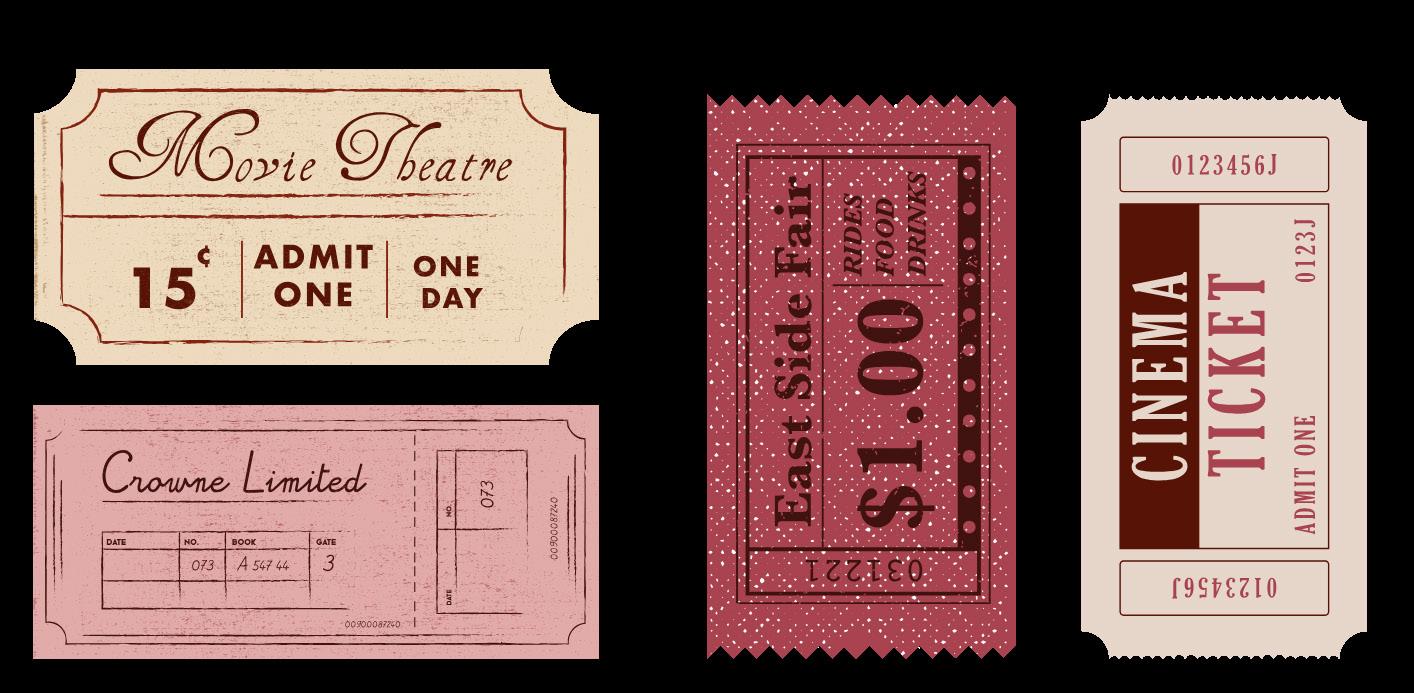


Modeled by Leo May ’29
Declan O’Connor ’26





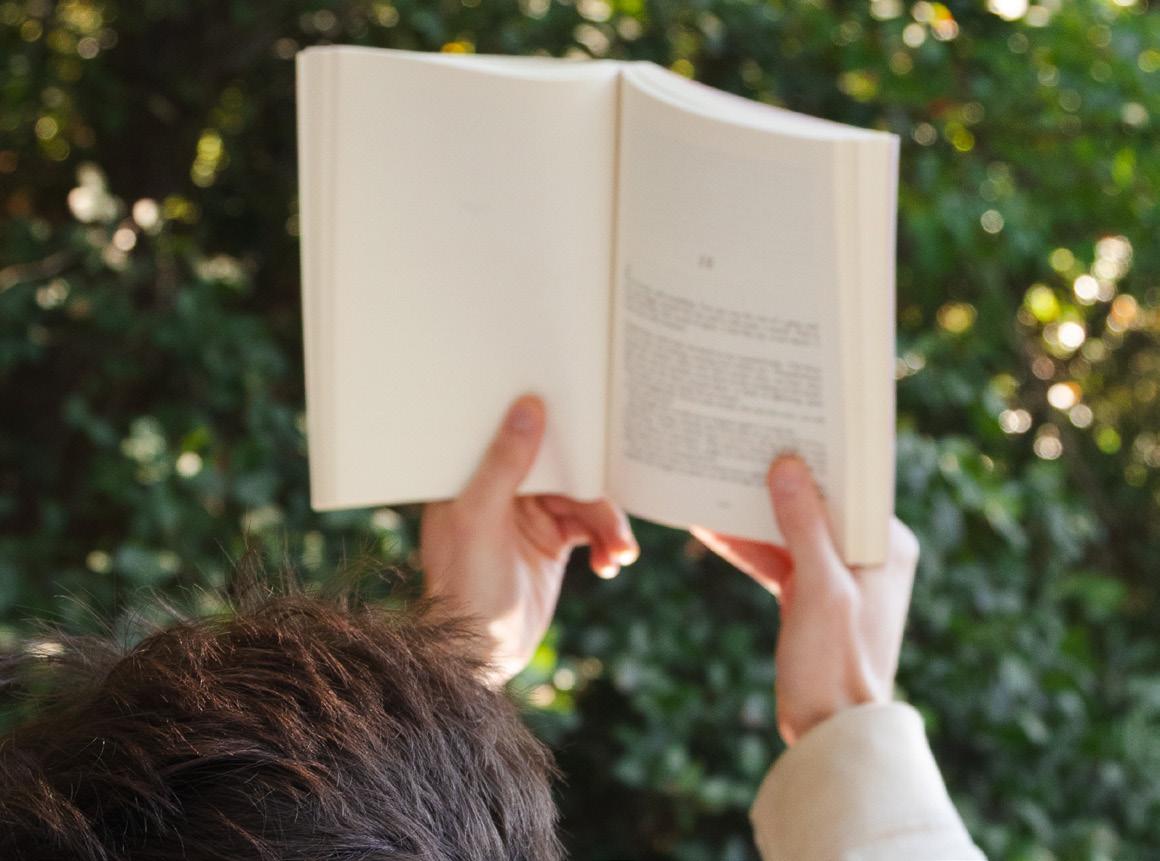

Story by Emma Carmichael ’26

Design by Leah Kohler ’28
“Performative Reading” was a phrase that sparked conversations, all because of a billionaire breakup. When Grimes and Elon Musk separated in 2022, Grimes attempted to regain her ‘cool girl’ image by dressing up in cosplay, reading The Communist Manifesto by Karl Marx, and calling the paparazzi on herself. Her intentions were transparent. She was using the work for its cultural recognition, signaling her intellectual split from Elon.
Other celebrities have followed suit, using book stylists to curate the perfect personal library for any event. The trend had permeated celebrity culture so extensively that in Vogue’s satirical video, “Inside Hailey Bieber’s Saint Laurent Bag,” Bieber jokes by bringing out two books by Nietzsche and Kant.

Eventually, performative reading trickled down to the average, online, young person, who showcased their books alongside lifestyle content, as a way to signal their intellectuality. Performative reading ultimately encapsulates the newfound obsession with algorithmically awarded attention; therefore, the only solution is to read books you grapple with internally, regardless of external validation. So, whether you are looking for a good book or a good-looking book, the following four books have it all:
Bunny by Mona Awad


For the friend who has a monogrammed pencil case, oddly niche Pinterest boards, and reads books exclusively for the cover:
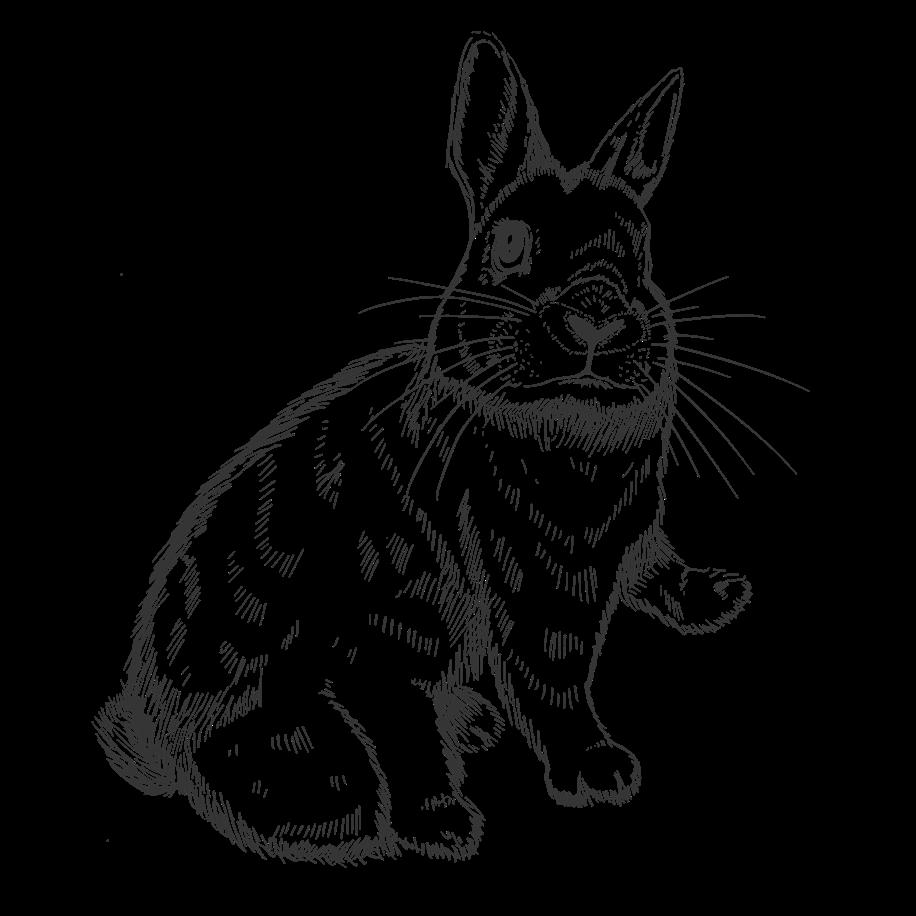
Bunny by Mona Awad was named one of the Best Books of 2019 by TIME, Vogue, Electric Literature, and The New York Public Library. If you have walked into any dainty coffee shop in the West Village or have TikTok, you will probably recognize the cover. The book details the journey of graduate student Samantha Mackey in her highly exclusive Master of Fine Arts program, consisting of a group of odd, wealthy classmates. In her creative writing workshop, she is drawn into a clique that calls each other “bunny.” The novel is the perfect blend of pastel aesthetics and a dark underbelly of gothic gore. Overall, this novel is an excellent gateway to magical surrealism, all while blending incredibly timed comic commentary on competitive higher academia. Think of it as Alice’s Adventures in Wonderland meets The Secret History, except all the characters are brilliant, well-dressed women. The novel already has its own cult following, making it the perfect book to discuss while unexpectedly sitting in a local coffee shop with the most sugary drink possible.
For the friend who is on the hunt for the perfect matcha, remixes house music, and wears a carabiner on their belt loop, even in black tie attire:
The Poppy War by R.F. Kuang is part of a three-book fantasy series based off the Second Sino-Japanese War that follows an account of shamans. It takes the perspective of Rin, a young woman determined to ace the top military academy’s entrance exam to escape an arranged marriage. During her time, she is tormented by Nezha. He is beautiful, wealthy, and popular. As the line between training and war blurs, Rin and Nezha form an unexpected and intense bond, evolving over the course of the three novels. The Poppy War is an enthralling account of the brutality of war and the trauma’s effects on young soldiers. Though it is not a romance, it is the perfect book for those seeking an elevated fantasy series that explores the dynamic between two deeply flawed individuals. Unfortunately, I would not recommend reading this in public because you may start crying. Therefore, the best place to read it would be in your childhood bedroom, surrounded by stuffed animals. But, if your friend still wants performative points, just tell them to post online.
byR.F.Kuang




For the friend who is obsessed with history, reads Marauders fanfiction all night, and loves drinking black tea in the mornings:
While T.H. White’s The Once and Future King was published in 1958, its observations of the human condition are still just as poignant. It is a retelling of King Arthur and the Knights of the Round Table, loosely based on the events in Sir Thomas Malory’s Le Morte d’Arthur. However, what makes White’s adaptation so sensational is its internal exploration of the three main characters: Arthur, Guinevere, and Lancelot. While many iterations offer events without justification, White ensures the reader understands the complex motivations and beliefs of each character, creating a clear illustration of the rise and fall of the Round Table and, subsequently, morality. This book is perfect for readers who want to read about complex themes and philosophies through clear, succinct language. For the best reading experience, I would recommend reading this novel stretched out on a picnic blanket on a sunny day.

byT.H.White


by Leo Tolstoy

For the friend who likes to read obnoxiously large books in public, reads The Wall Street Journal every morning, and already has their internship lined up for next summer:


War and Peace by Leo Tolstoy is nothing short of the best realist novel ever written. In addition to being one of the top novels of all time, it is also the top novel that people say they are going to read, only to leave it on their shelf, staring at them. My recommendation: go to a local estate sale and look at the bookshelf, and you will likely see it. The novel focuses on characters Pierre Bezukhov, Andrei Bolkonsky, and Natasha Rostova, and their intertwined journeys to find purpose. The characters’ stories play out against the backdrop of the effects of the Napoleonic Wars in Russia. Each chapter is either dubbed a “war” chapter or a “peace” chapter, until the two slowly blend together, discussing the long-standing effects of war on civilization. Each character is distinct and dynamic, pulling you in until the very end. Obviously, the second greatest highlight of reading War and Peace is the spectacle of reading a book larger than your head on public transit.
Regardless of whether you are reading for the aesthetic, attention, or admiration, reading performatively is better than not reading at all.



Imagine a world where there are millions of people watching you at any given moment, and you have no idea what moments they see. You only know that every second you are awake, there is a possibility that it will be livestreamed to your friends, family, co-workers, and maybe even your childhood preschool teacher. In reality, you would be awkward, anxious, and hyperaware of the cameras filming from every angle. Yet, every year, tens of thousands of applications are submitted for the reality television show Love Island USA.

prize, to find love, or, in the case of Big Brother, sometimes just to cause chaos. Many contestants could dedicate a few months of sacrificed privacy, then return to a relatively unchanged life. When viewership was lower, contestants had the choice of whether they wanted to pursue a life in the limelight; however, now, reality contestants see their participation as a fast track to gaining thousands of followers. But to gain followers, contestants have to be likable.
Three years ago, if you asked any self-respecting reality television enthusiast about Love Island USA, they would reply that it is the vastly inferior little sister of the goliath Love Island UK. However, this sentiment completely changed in the summer of 2024. Due to social media’s influence, season six of Love Island USA doubled its viewership in a single week, and the show’s popularity surged. It completely changed the dynamic, as the contestants themselves had no idea of the show’s cultural impact. They acted like normal people who had forgotten the cameras were rolling — crying, yelling, and laughing — all the while, they had no idea that outside the villa, they were gaining hundreds of thousands of followers. After season six’s immense success, audiences anxiously awaited the following season in 2025. However, as each episode aired, audiences expressed dissatisfaction with the contestants, feeling that the show lacked the authenticity the previous season had captured so well. Contestants’ awareness of audience perception and self-surveillance, consequently, led them to perform in unnatural ways, causing modern reality television to lose its former charm.
Before the art of influencing became a lucrative career, contestants’ motivations to go on reality television were the desire to win a
The integration of social media careers into reality television means that being unpopular threatens your livelihood, making audience perception the most critical aspect of show participation. This prioritization of the audience constructs unnatural relationships between the show’s contestants, as people are less or more likely to act because of external factors, rather than personal feelings. Past competitors have admitted that Love Island USA stars sit around and speculate about how the audience views them. In one instance, during a challenge in season seven, the producers of Love Island USA allowed contestants to see how the audience ranked them in voting. Knowing these perceptions rules how each person approaches their relationships with others in the house.
For example, in Love Island USA season seven, contestant Cierra Ortega’s love interest kissed Ortega’s friend, Olandria Carthen. Ortega reacted calmly, as if she did not care. In response, Iris Kendall told Ortega, “Cool, like you’re a cool girl, but that’s f—ing crazy.” Audiences did not view Ortega’s nonchalant reaction as mature, as she likely intended it; rather, viewers perceived it as fake, and Kendall’s response captured that. In accordance with their social media presences, many contestants believe they should put forward their perfect selves to maximize their likability. Instead, this idea has the opposite effect, making audiences dislike contestants more. Think about it: Imagine you were put on an island with a bunch of 10s, each lacking loyalty to one another, and deprived of basic luxuries like
sleep, time-keeping, and good food; you would be acting a little crazy, too. On the contrary, when contestants x act in a robotic or calculated way, it breaches trust between the audience and the stars.
Due to the anonymity of social media participation, audiences can easily mobilize mass hate and direct it at contestants. Hate is harder to monetize after the show because people will be less likely to buy whatever product the contestant is selling. Therefore, to avoid this modern mob, contestants calculate their actions to maximize their return for the risk taken. For example, during season seven of LoveIsland USA , after contestant Bryan Arenales discovered that Amaya Espinal was the audience’s frontrunner to win, he coupled up with her purely to win, only staying together until about a week after the reunion. Some watchers felt that Arenales’s move was very transparent and shifty, while others praised Arenales for coupling up with America’s sweetheart. All in
uninterested in or be more direct in calling people out. Regardless, people

the right to blatantly hate on the instigators. They want to have their cake and eat it too.
Ultimately, it is this act of self-surveillance by contestants that kills the appeal of reality television. Now, instead of showcasing the spectrum of human behavior, it has become a repetitive interaction of self-perfectionism that one can find on any social media app. That is, of course, because reality television is now just an extension of social media. Because of this, there will never be another Love Island USA. While other smaller reality television shows may attempt to recreate the same phenomenon, having a cast of contestants unaware of the scale of their audience is rare. It will likely never be repeated by this specific franchise again. The stakes made every tear, crash-out, and confession even more meaningful because, for them, it was not just a show but an extension of their real love life. But for now, if viewers love watching pretty people have pretty relationships and talk with pretty words, fans will love the future seasons Love Island USA.

While it is easy to blame the people who pursue careers in social media through reality television, the underlying issue is the audience. Without the audience’s ability to determine the fates of contestants, everyone would act strategically in accordance with the rules of whatever show they are on. If they are on Love Island USA, they might be more inclined to leave a relationship they are







Story by Elizabeth Ray ’29
Design by Anna Dehmer ’28






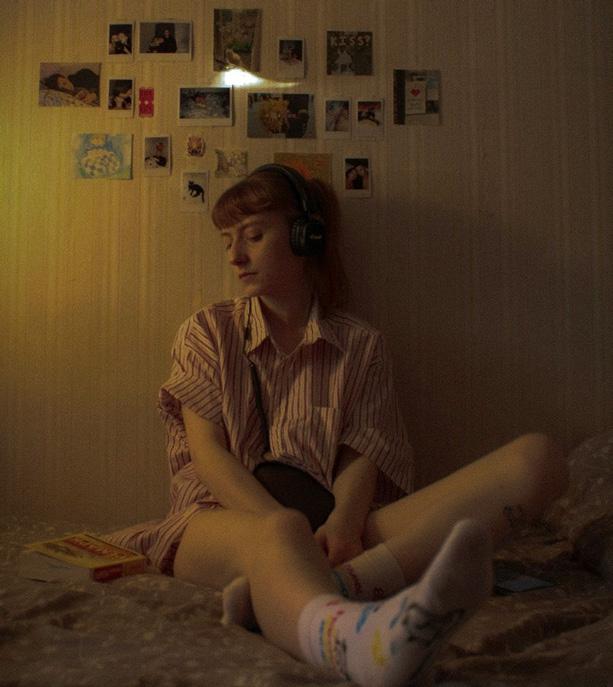




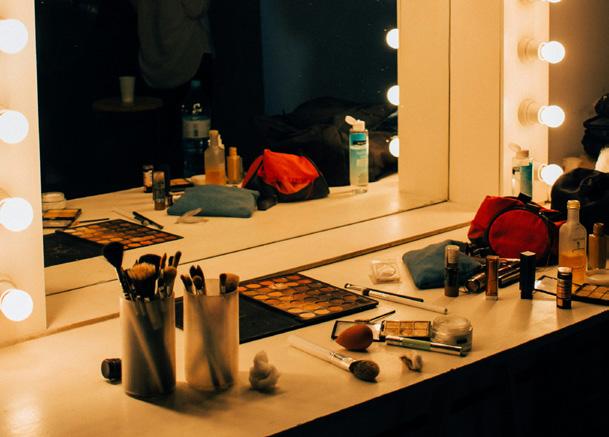

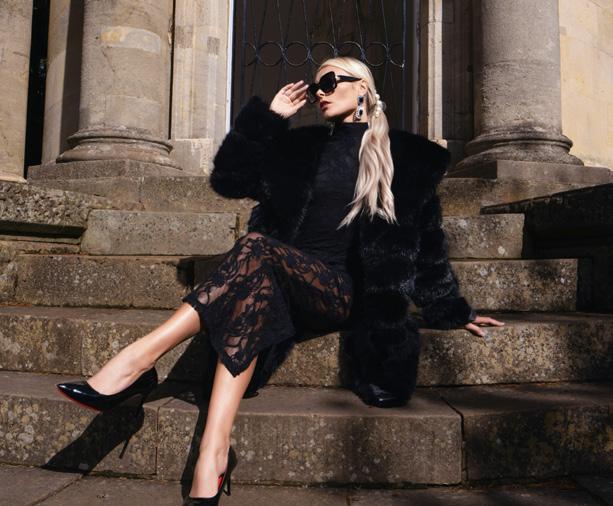


It is human nature to label things. Labels give us a sense of understanding about certain topics and allow us to organize multiple ideas under one, neat umbrella. Creating and organizing fashion genres and lifestyles is nothing new, as seen in the traditional print magazines of the pre-digital age. However, the emergence of modern internet aesthetics has changed how we view personal style and trends. These aesthetics — and their virtual communities — have become increasingly mainstream in the past decade with the rise of social media platforms like Instagram and TikTok. But what is an aesthetic, and how is it any different from a fashion trend?
Internet aesthetics originated in the 1990s, but exploded in popularity over the last 15 years, thanks to sites like Tumblr and Pinterest. Aesthetics encompass a wide variety of topics, from art to history, but their circulation on the internet has specifically given rise to “subcultures” of style. These subcultures not only showcase clothing or makeup, but also entire lifestyles.
Take, for example, the “that girl” aesthetic, which depicts a girl who not only dons matching workout sets but also wakes up at 5 a.m. for her morning pilates and 10-step skincare routine. The constant circulation of this idealistic content led to the formation of communities around specific aesthetics, which only serve to further increase the subculture’s exposure. Despite this, the continuous cycling of information on social media, coupled with the ease with which existing aesthetics can be modified, has caused subcultures (and their communities) to face increasingly shorter shelf lives.
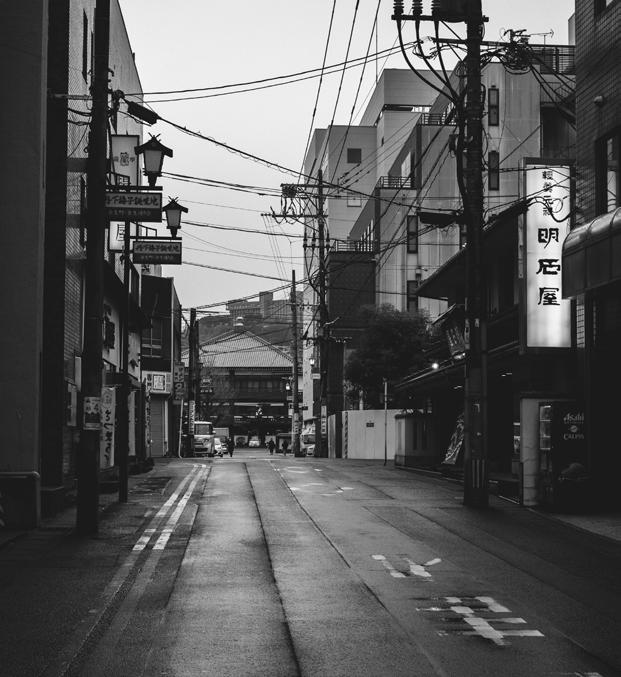

Fashion wasn’t always unpredictable. When retailers relied on traditional print magazines to advertise their products, fashion cycles could last anywhere from five to 10 years. This was in part because consumers were forced to visit physical stores with delayed restocking, which is in stark contrast to the 24/7 accessibility of fast fashion that we have today. This is why, alongside hyper-sensitive internet algorithms, current trend cycles typically only make it a few months before being shelved to make room for the next big thing.
As a result of these dizzying trend cycles, Gen Z is experiencing an identity crisis. The constant need to perform by fitting into the newest aesthetic box has prevented many young people from developing their own sense of self. Of course, young people have always conformed to trends in an effort to find belonging, but prior to the online shopping boom of the 1990s, these trends amounted to single clothing items rather than full-fledged aesthetics with corresponding lifestyles. Thus, rather than finding personal style organically, teenagers and young adults have instead flocked to Pinterest moodboards and aesthetic starter packs that tell them how they should dress. This is why, in an increasingly AI-driven landscape, unable to comprehend the slightest bit of nuance, you are instructed to exist as one pre-packaged and pre-determined aesthetic. Are you a coquette, a downtown girl, or an office siren? Choose! (And don’t worry about commitment because you’ll need to adapt to the next trend in a few weeks anyway ... )
Additionally, because participation in aesthetics occurs in virtual spaces that prioritize visual presentation, many feel the consumerist need to “perform” to the aesthetic’s exact guidelines to fit in. To be able to say that you are truly a part of a certain aesthetic, you are forced to buy products (often entire hauls) to authentically “achieve” that particular style. These purchases are often marketed under the guise of “self-care,” but don’t be fooled — the attractive packaging and name brand associated with the product is far more important to the aesthetic than its actual effect on your well-being.
After all, if you don’t have an Instagrammable açai bowl and a $30 gratitude journal, are you really “that girl”?
Internet aesthetics rely on overconsumption, which has harmful ripple effects. The attractive prices and unparalleled accessibility of fast fashion retailers make it easy for young people to purchase new items. These small impulse purchases offer quick dopamine hits that addict the consumer, causing unhealthy shopping habits that eventually lead to economic insecurity. Moreover, fast fashion is notoriously bad for the environment. Aside from inhumane working conditions, the cheap manufacturing that factors into the cheap price tags means that the majority of pieces aren’t built to last after multiple wears and washes. This, coupled with the volatile nature of trend cycles, means that most fast fashion purchases end up in landfills within just a few months.


So, how can you avoid engaging with the problematic aspects of aesthetics? My advice: Note the things you like and leave the rest. Take the time to do a broad search of different subcultures, and instead of forcing yourself to conform to one specific category, take note of the individual elements that resonate with you. Then, begin incorporating those aspects into your daily routine. As bad as the internet is for promoting overconsumption, it makes ideas, products, and information more accessible. You can use this capability to your advantage by understanding what you want to get out of what you wear. Think of aesthetics as a helpful tool, not an end-all-be-all when it comes to personal style.
When figuring out what you like, it is also important to shop sustainably and strategically. Opt to invest in a couple of intentional, high-quality pieces you love instead of a cart full of cheap items that will inevitably be thrown out in a few months. Rather than dropping hundreds of dollars on trendy pieces that will go out of style in the next trend cycle or two, focus on building a closet of basics that you can work with no matter your mood. These tactics improve not only the health of the environment, but also your wallet.
It can be easy to get caught up in the Shein hauls, Pinterest boards, and picture-perfect morning routines that flood your feed, but at the end of the day, it is important to remember that you should focus on presenting yourself according to your desires — not your algorithm’s.





Story by Grace Ki Rivera ’26
Design by Leah Kohler ’28
Taylor Swift dropped her 12th studio album, The Life of a Showgirl, and people have been talking about it nonstop. Seemingly in response to criticism of her past album, The Tortured Poets Department, this tight, 12-song album feels both defensive and defiant. She’s answering back.



It’s an album about the performance of fame, the exhaustion that comes with constantly being looked at, being loved and hated in equal measure. Its title alone acknowledges the spectacle of celebrity life, and that being a pop star today isn’t about privacy or mystery, but about the performance that comes with being watched.

What’s fascinating is how this record arrives at a moment when Swift’s image feels almost mythological. Conversations surrounding the album’s concept often dismiss it as nothing new. But what makes The Life of a Showgirl stand out is how strange some of the lyrics feel, almost disjointed and even surreal.
Swift has never been afraid to expose the contradictions of being a pop star, specifically about the intimacy and isolation that come with turning your life into art. She’s done this before in songs like “I Can Do It With a Broken Heart” and “Clara Bow,” but here, the tone is sharper. It’s almost as if she’s narrating her own spectacle in real time.

“Eldest Daughter” is the centerpiece of the album. The lyrics read like a diary entry from someone who’s been praised her entire life for holding it together. However, the song’s use of popular internet phrases like “trolling” and “savage” feels a bit too online. These phrases offset the orchestral production in the background, and it’s one of those moments where you can feel the dissonance between Taylor-theperson and Taylor-the-brand.
Even still, there’s something sincere lying underneath. You get the sense that these songs are less about meme language and more about the loneliness of always being the one who has to perform emotional stability for everyone else.
Then comes “CANCELLED!” Some audiences seem to crave a deeper connection — a move away from the hyper-digital and toward things that feel tangible, handmade, and grounded — and “CANCELLED!” brushes up against that tension.
She’s aware of the need to course-correct, and that’s part of what makes the album interesting. Swift has always been a master of narrative control, but people online are divided: Is it satire? Is she in on the joke? Their likes, dislikes, theories, and analyses all feed into a larger question: What is she saying?
She starts with “The Fate of Ophelia,” the album’s only single, and arguably its emotional thesis. As the title suggests, it is a reference to the Shakespearean character Ophelia. In terms of production, I can’t get enough. It has a jaunty, pop tune that may not make you want to get up and dance, but might make you bop your head to it.
“Elizabeth Taylor” once again proves that Swift and Max Martin make a great production team. Swift’s partnership with Martin continues to be a winning formula — a formula that she keeps rewriting.
Half-pop, half-social commentary, this is one of those songs that tries to grapple with online culture head-on. Sometimes when art attempts to capture the internet too directly, it can be distant or awkward, and Swift isn’t immune to that.
But maybe that’s the point. Maybe the song isn’t supposed to sound timeless. Just like cancel culture, it’s messy, overstimulating, and fleeting.
Then there’s “Wood.” The song leans quite hard into innuendo that it ends up feeling more corny than sexy. Personally, I think her best writing about desire has always been grounded in suggestion.
It reminded me of her 2017 song “Dress” with her lyrics, “only bought this dress so you could take it off.” Here, she trusted the space between words to do the work. “Wood” doesn’t leave as much to the imagination, and maybe that’s the problem. It feels less like intimacy and more like commentary, and, frankly, I don’t need that much insight into her relationship or any particular part of her fiancé.
Like some others on the internet, I’m hoping it’s a deliberate exaggeration. For years, people have reduced Swift’s songwriting to who she’s dating, who the song is about. Maybe “Wood” is her way of saying “Fine, you want confessional? I’ll give you confessional.”
There is, of course, the title track, featuring Sabrina Carpenter, because what would The Life of a Showgirl be without another showgirl sharing the stage? It’s a meta-commentary on what it means to be a showgirl in today’s time. Swift has shown that she can master controlling the narrative around her, and in “The Life of a Showgirl (feat. Sabrina Carpenter),” she’s extending that storytelling to include another performer. Swift’s and Carpenter’s voices together are playful and confident, a contrast between Swift’s seasoned theatricality and Carpenter’s sparkling, irreverent energy. Carpenter takes a full verse, and Swift makes it clear that this isn’t just a cameo. Carpenter is here to stay.
That sense of self-awareness extends throughout the album. Swift always seems to know exactly what audiences want from her, and here, she resists that. We’ve gotten so used to the introspective Swift of folklore and evermore, those records that felt like love letters to storytelling itself. The Life of a Showgirl, by contrast, feels flashy, constructed, and even a little performative about its performance.
Swift is a mirror of the culture that made her, and this album seems to understand that. It’s not just about being watched, it’s about how we watch her, how we turn women into stories and then criticize them for playing their parts too well.
I’ll admit that this album isn’t my favorite. Not yet, anyway. But I’ve learned never to underestimate the slow burn of a Taylor Swift record. When Swift released The Tortured Poets Department were aggravated, confused, and bored. And now, one year later, many of those same people are begging for its songs to appear on popular television series, like The Summer I Turned Pretty. Maybe The Life of a Showgirl just needs time to find its moment. Or maybe it already has, reflecting us back and holding our attention as we watch, analyze, and debate every detail.





Story by Elijah Clark ’28
Design by Mali Bucher ’29
It is no secret that the College of William and Mary is undergoing a rebranding effort. On every lamppost, banner, and program, enormous insignias proclaim the “Year of the Environment.” This public shift was accompanied by substantial donations, resulting in the establishment of the College’s Batten School of Coastal and Marine Sciences following a $100 million donation from Jane Batten HON ’17, L.H.D. ’19. On the surface, this shift appears to be extremely beneficial. Environment and Sustainability and the Coastal and Marine Sciences have both become dedicated major programs. The Parks and Ecotherapy Research Lab’s Campus Nature Rx program actively advocates for nature engagement and student mental health, and it has seen positive results. Additionally, shiny new solar panels will soon be seen on top of the recently constructed West Woods Dining Hall.

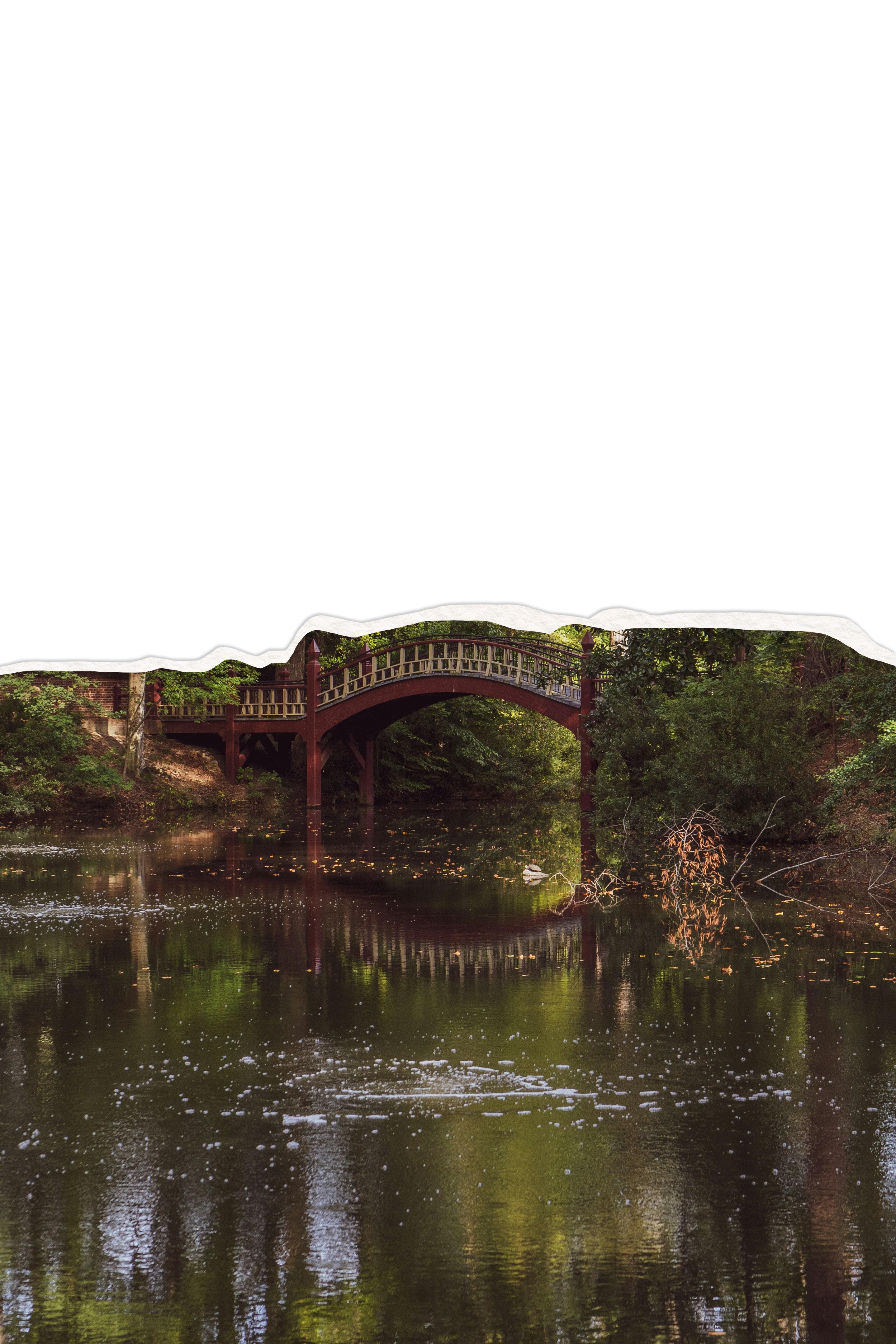



or Yik Yak posts about sprinklers running after the rain, an air of skepticism seems to permeate the student psyche.
To what extent does the College genuinely care about the environment? Or is this a cumulative push to appeal to the large donations from Batten, Dr R. Todd Stravitz, and the Brunckhorst Foundations that led to the creation of the College’s Batten School of Coastal and Marine Sciences? These donations are big and incredibly beneficial to the College’s environmental initiatives. However, do these donations accurately reflect the administration’s overall objectives, and can the school be encouraged to continue its environmental initiatives beyond the Year of the Environment? With its grand unveilings and speeches, many are left wondering how the College has been treating its environmental responsibilities throughout the years.
Now, the College’s mismanagement of the environment does not seem entirely apparent at first glance. The campus as a whole has initiated efforts to become more energy efficient, as evidenced by a variety of energy efficiency-related initiatives. The College installed 531 geothermal wells around dormitories and dining
halls to facilitate heat exchange. It has also begun purchasing its electricity from Dominion Energy’s solar farms.
Biology professor and director of the Keck Environmental Field Lab, Randolph Chambers, celebrated the College’s efforts to become more sustainable with its energy sourcing.
“These are tangible efforts toward reduction of the campus carbon footprint and promotion of sustainability,” Chambers said.
However, every improvement that comes to campus seems to bring another negative. One of these negatives is the damage to the lakes and waterways in direct proximity to the College. Lake Matoaka, the Crim Dell, and ponds adjacent to the Lettie Pate Evans Wildflower Refuge have all suffered noticeable damage from runoff, ill management, and neglect. Although the Crim Dell has been drained and cleaned before, there has not been a considerable effort to do a thorough cleaning since 2018. This oversight not only affects the key waterways on the campus but it also impacts everything from ponds to streams — all due to the surge of runoff.
If one would like an example of this oversight, look no further than ponds adjacent to the Wildflower Refuge. Advertised on the College’s website as “a walk through the brick-lined paths within the refuge and [a] cool respite from the high energy campus environment,” the pathways available to students have been sectioned off due to persistent flooding. Most seasons, one can find large pools of water over the brick-lined paths that the College advertised. Not far from this, the West Woods Pedestrian Bridge cuts directly through the largest natural segments of the campus. Large pillars of rusted steel are planted alongside what is traditionally a lovely, natural walk. Aside from being a visually jarring addition

to what is already a relatively small path through the natural center of campus, numerous other oversights became apparent only once the cost of this construction is considered.
Runoff from the construction site flows directly into the lakes and rivers surrounding the campus. It is most common after rainstorms, but, even on clear days, one can see the sediment dredged up as a consequence of the construction. The ponds are muddy and dark, choked with the chemicals and dust from the construction sites of the West Woods Dining and Residential Halls. The damage is visible to anyone who takes a closer look at the Crim Dell or Lake Matoaka. It is a common sentiment echoed through student talks and stated clearly on Yik Yak:
“My Year of the Environment wishes: 1. Make Lake Matoka safe to swim in,” an anonymous user wrote.
The feelings behind this complaint can be found in conversations with many students on campus, but construction and destruction continue nonetheless. One can hope that these faults are symptoms of a positive change. Chambers commented on the environmental complications from the stormwater runoff.
“One hopes that an outcome of all the messy runoff will be better stormwater management and protection of our aquatic resources,” he said.
However, the College has issued no official comment about its own pollution, with many of its focuses being on the water quality of the Chesapeake, rather than on the quality of the lakes in its own backyard.
Even before the days of construction, these ponds were filled with algae that grew relentlessly in a dense, green layer on the water. Even at a distance, one could smell the sickly-sweet smell of rotting plants on the surface. This smell persisted for several years, only disrupted by the onslaught of runoff. These problems are not only
College community but also to the local flora and fauna. These runoff issues and the resulting damages are numerous and persistent in the campus’s greenspaces and waterways. Downed trees clog the streams by DuPont Hall, and similar felled trees lie in the ponds adjacent to the Wildflower Refuge. To celebrate the environmental benefits without acknowledging the shortcomings would ultimately harm us in the long run.
So the question remains: Is the Year of the Environment performative? Yes. Like most outward changes on campus, the purpose of the Year of the Environment is to garner support for the campus’s environmental initiatives. It is hard to argue that such an intense focus on the environment in a year so marked by construction and water pollution is not, to some extent, performative. Nevertheless, I believe there is another question to be asked: How much does the performative nature of these actions really matter? Improvements from the Year of Environment’s changes are set to be primarily beneficial to the long-term health of the campus as a whole. These benefits should not be downplayed, nor should they be forgotten. As the College progresses into the future, it is essential to encourage the administration to continue making strides to improve its environmental impact. There is still much to be done in terms of further cleaning of our waterways and developing a carbon-neutral campus.
This work is of the utmost importance, regardless of the year or designation. Although this year’s push may be ultimately performative, the benefits we can reap from such efforts are anything but. If we are to achieve a substantive future as an environmentally friendly college, we must continue to critique the vices and encourage the virtues of the administration’s decisions regarding all environmental matters. Chambers framed the ideal mindset for the College perfectly:
“Every year is the year of the environment in the Environment and Sustainability Program,”

Story and Design by Phillip Matijevic ’27
“Move fast and break things” is a motto that Meta CEO and founder Mark Zuckerberg coined to describe the contemporary approach in which software developers push to implement new features as fast as possible, despite the potential consequences of moving too quickly. Since large-language models came onto the global scene in 2017, the race towards developing the most advanced artificial intelligence models and integrating them into our daily lives has extended to almost every industry, including higher education. The College of William and Mary’s School of Computing, Data Sciences, and Physics, which opened this fall, has adopted a similar approach.





The school’s idea, according to Dean of the School of Computing, Data Sciences, and Physics Douglas Schmidt ’84, M.A. ’86, is that higher education should not reflexively restrict the use of AI, but it should instead supplement learning and completing tasks, especially amid worries that the AI crutch could inhibit students’ ability to learn fundamental concepts in their disciplines. Data Science Department Chair Dan Runfola announced in an email on Aug. 22 that the department is undergoing a shift from “programming” to “programming with generative tools.” Course curricula have already started reflecting this change: Applied Machine Learning, widely known as DATA 305, has officially changed its name to Problem Solving with Generative AI.
In an interview with Flat Hat Magazine, Schmidt explained the CDSP school’s tech-first approach in further detail. He shared his belief that fundamental coding skills are now relegated to the “syntactic” realm in the AI era. In other words, they are the basic building blocks of knowledge, but no longer the richest aspect of knowledge that students should focus on acquiring.
“I no longer have to be aware of some of the lowlevel syntactic quirks of Java, or C++, or Python,” Schmidt said. “I can work at a level that’s much more intentional. I want a program that will do X,Y, Z.So it’s not about forgetting, it’s about no longer needing to know.”
According to some faculty of the CDSP school, generative AI has now democratized programming to such an extent that anyone can build software tools with some guidance. Runfola spoke about the potential merits of this approach, such as making creative software development more accessible across disciplines.
“We had a government student that had never coded before in his life, like he literally had never touched Python before,” Runfola said. “And with almost no guidance, we were able to give him some quick tips and tricks to build an entire website from generative AI techniques. And so we’re really leaning very heavily on this and how quickly we can teach students so they can get their ideas executed without the normal slog of four years of learning how to be a self-engineer.”
Schmidt clarified that the CDSP school’s push to
expand AI course offerings, including the College’s new AI minor and future major, is a faculty-driven initiative more than an operational imperative from the administration. He explained that this approach to augmented learning with AI tools might be shared across other departments, especially with the College’s October launch of the ChatGPT Edu program, which provides select departments with an enterprise-level subscription to Open AI’s premium services.
“We’re already working with other departments on campus to build AI courses in their departments that students could take for credit towards this degree,” Schmidt said. “So, for example, we’re working with the music department right now. I think it’s called Musical AI, what they’re developing, and we’re hopeful that the course could actually contribute as an elective towards this degree program too.”
Schmidt explained that the College has been able to fast-track its addition of AI programming due to a lack of pre-approval requirements from the Commonwealth of Virginia, allowing the CSDP school to develop new course curricula and degree programs in an on-the-go, experimental fashion.
“The reason why the AI minor came first was because we could do that without having to get approval from the State Commission on Higher Education in Virginia,” he said. Schmidt also shared that there are plans to introduce a Bachelor of Arts in AI that will be focused on teaching students how to augment their learning at the College. However, it is unclear if the commonwealth will approve such a major.
In an interview with Flat Hat Magazine, Provost Peggy Agouris revealed that the College, like countless other institutions nationwide, has been largely overwhelmed by the speed at which AI has woven its way into higher education. She shared that past technological advancements were much easier to navigate because they did not threaten to reshape the long-standing processes of knowledge acquisition on which higher education models are fundamentally based.
“I was [teaching] a certain way throughout my career, and I was confident in what I was able to offer my students and how I was able to help them because understanding and assessing knowledge is to help you be better at what you do,” Agouris said.
“Now, I don’t know anymore.”
Professor of history Lu Ann Homza expressed concern about the inhibitory effects that she and several of her colleagues believe AI is having on learning outcomes in classrooms, not only at the college level, but also for K-12 students.
“I don’t know if you’ve seen the latest statistics nationwide, that 12th-grade reading and mathematical scores have bottomed out,” Homza said. “They are really, really low, and we can’t tie that to COVID because COVID’s been over for a little while now. I think it is fair to say that many of my colleagues and I are concerned that students are turning to AI for easy answers and thus are not developing intellectually.”
Agouris echoed Homza’s concerns that AI will lead to a loss of vital cognitive and critical thinking skills that were previously acquired without heavy technological assistance.
“I love maps [and] I was very good at navigating before GPS came about,” Agouris said. “And so after that, I punch in things, and I lost my ability to have this very great spatial cognition in how I do this. It’s a similar thing [with AI]. We’re losing some muscles that are very important.”
At the same time, Agouris emphasized her desire to not disturb the core tenets of academic freedom that have long been central to the College’s pedagogy. In other words, faculty members who wish to implement AI in their lessons should not be prohibited from doing so.
“I don’t want to interfere with the way our faculty are teaching their courses because I’m a firm believer in academic freedom,” she said.
Agouris addressed the rapidly evolving higher education landscape, which she said can no longer be taken for granted. She recognized the College’s need to be flexible and adaptive with external technological advancements while also safeguarding the core educational objectives of the Alma Mater of the Nation.
“[It is] a difficult time in terms of transitioning from a classical, ‘we know how it was’ kind of world, to a world that is changing on a daily basis,” Agouris said, concluding that AI is “not gonna go away.”
Homza voiced concern about not receiving clear disciplinary guidelines from the College on how to handle students’ use of AI in their assignments, which she said has put professors in a difficult position when managing individual cases.
“We as professors have not been given clear guidelines, in my opinion, as to how we can gauge whether or not AI is in play in our students’ assignments,” Homza said.
Homza commended the Studio for Teaching and Learning Excellence’s proactive guidance in proposing syllabi additions relative to AI, but she still feels that more needs to be done.
“[The Studio for Teaching and Learning Excellence has been] very proactive about workshopping for us and sending out proposed syllabus language for us about the use of AI and trying to establish really clear boundaries about when it’s useful for our classes and when it isn’t useful for our classes,” she said. “But many of my colleagues and I too often feel lost in this new environment.”
Homza shed light on another major blind spot of the AI era from her perspective.
“[I do not know] whether my students have read the articles or whether they’re simply asking summaries from ChatGPT about the articles,” Homza said.
Agouris recognized the high prevalence of such concerns from professors, but also warned against hastily disciplining students for “AI-generated work” that might actually be their own.
“It might risk the situation where we are really penalizing something that was the student’s work,” Agouris said.
Amid the AI wave’s transformation of society at breakneck speed, Runfola underscored the significance of this pedagogical debate by comparing it to major technological innovations of the past.
“[AI is] the most critical debate we’ve had in higher ed since the advent of the calculator,” Runfola said.
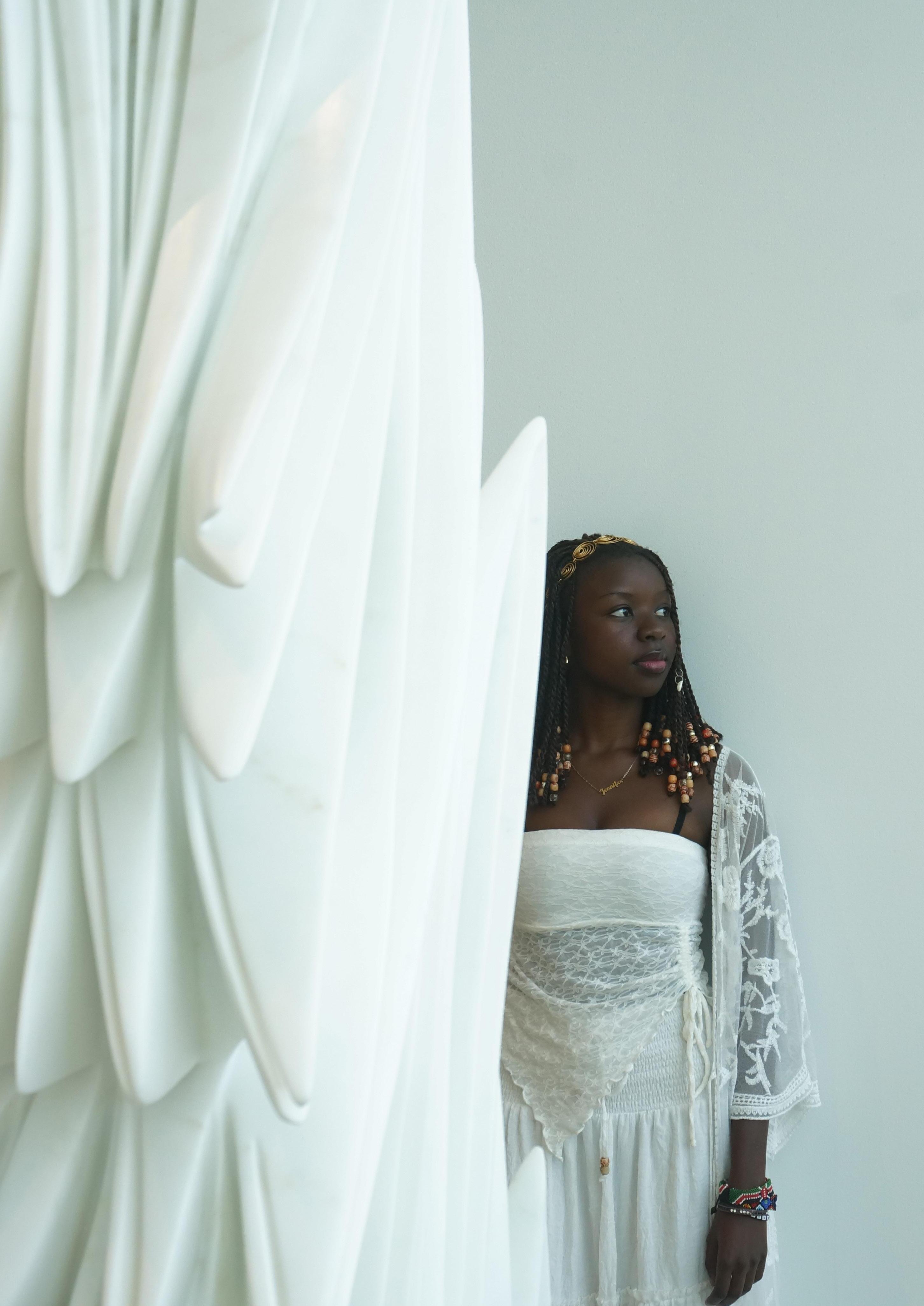







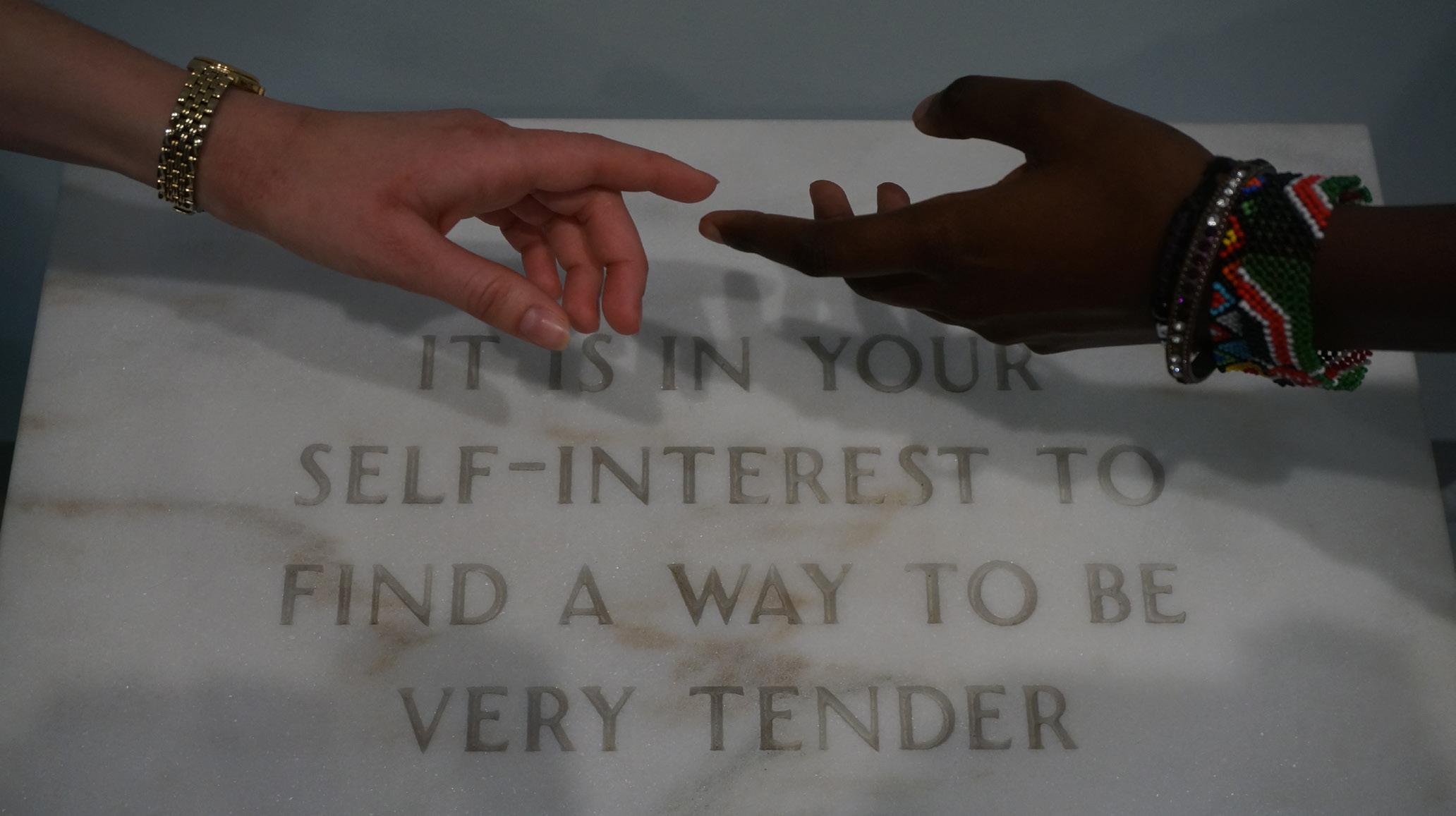





















Diagnosing attention deficit hyperactivity disorder or autism spectrum disorder is complex. This complexity can be attributed to masking behaviors, how little is known about neurodivergency, and existing trends of underdiagnosis for certain groups. But, before investigating masking conditions, let’s first take a moment to understand what autism is.
Autism spectrum disorders can involve a variety of symptoms, making them difficult to sum up in brief. Generally speaking, though, ASD is a neurological and developmental condition. This is because, although experiences differ from person to person, certain manifestations of the condition involve differences in social interaction, communication, learning processes, as well as general behavior. While this can vary as a result of factors like gender and socioeconomic status, diagnoses typically come at an early age following the presentation of symptoms, which is why this can be labeled as a developmental condition.
Associate professor of psychological sciences Peter Vishton stated similar ideas, describing autism as “a constellation of symptoms” that “manifests itself really differently across lots of kids.”
Vishton provided several common examples of autism symptoms in children, such as sensitivity to external stimuli and difficulty processing social signals.
“Autistic kids tend to not be nearly as good at filtering stuff out, such that they will be very distracted by things and sensitive to loud noises and bright lights and things like that,” Vishton said. A larger argument surrounding autism, ADHD, and similar conditions centers around the idea that these differences between individuals lead to underdiagnoses for certain groups and overdiagnoses for others. Therefore, it is critical to the study and treatment of autism that symptom variances are further understood and spotted.
The way autism presents itself in different people can vary greatly. One of the most significant divides exists between men and women.
According to an academic article in Molecular Autism on sex and gender differences across the autism spectrum, “affected females are hypothesized to have a higher average burden of ASD risk
factors.” This key finding illustrates how much the general experience of someone with autism can differ based on gender.
Let’s take a look at the definition of ADHD:
Clinical psychologist at the University of Canterbury, Julia J. Rucklidge, describes ADHD as a condition that involves symptoms like inattention, hyperactivity, and impulsivity. Rucklidge highlights how ADHD, like autism, differs depending on gender. Typically, boys exhibit more externally visible symptoms, such as hyperactivity and disruptive behavior, while girls are more likely to experience anxiety and depression as comorbid internalizing problems.
Vishton noted that the way in which ADHD symptoms are perceived differs greatly depending on the person’s gender.
“There might be lower expectations of boys being able to sit still and do the required work, which might lower the boys’ performance overall,” Vishton said. “Some eight-year-old girl who does have problems sitting still, a teacher might not be as forgiving to that kid because, again, of the genderbased expectations.”
What constitutes masking behaviors? Neurodivergent individuals use masking behaviors to disguise and compensate for features and shortcomings related to autism, typically in a social context.
This is where the idea of performance comes into play. It is part of human nature to select certain behaviors in order to present yourself in a specific way. Vishton described how masking behaviors are often subconscious reflexes in response to the social world.
“This putting on a show, the presenting yourself to people, we do that constantly, so much so that we don’t even think about it,” Vishton said.
Although everyone subconsciously presents themselves differently to other people to some degree, the existence of social stigmas around autism and ADHD, as well as the desire to conform socially, leads to the development of masking behaviors. Masking behaviors within autism are generally
separated into three categories. First, individuals compensating for difficulty in social settings will carefully observe others for behaviors to copy or form into a script. Second, many people mask autism-related characteristics by constantly monitoring eye contact, facial expressions, and gestures to create a neurotypical-presenting persona. The final technique is assimilation, which involves broader strategies used to fit in, such as performing and pretending while interacting with others.
Masking behaviors for those with ADHD generally involve suppressing loud speech and stimming behaviors, mimicking other people in social situations, forcing reactions to fit certain neurotypical standards, developing perfectionism, and other learned tendencies that are meant to “manage” or “cover up” typical hyperactive behaviors.

It is commonly believed that autism or ADHD could represent something “wrong” with someone, or that it would negatively reflect how that person is viewed. Society has a stigma against diagnoses and visible symptoms, which Vishton said furthers the desire to mask these conditions while also impeding the acquisition of a diagnosis.
Vishton also pointed out that parents, teachers, or other people around someone with autism may steer them away from a diagnosis because of fears that it will put up unnecessary barriers to their success. Job hirings, college admissions, and general social success are all scenarios where someone may fear that a label will impede their ability to grow and succeed.
In an educational setting, young girls and young boys face different standards for behavior, meaning there may be environmental pressures driving girls with ADHD or autism to suppress symptoms or traits of these conditions.
According to an academic article in Frontiers in Psychiatry, researchers observed that “camouflage seems to be more common among females who report more autistic symptoms themselves.” Since women exhibit a different set of symptoms than men, the notion that they can often mask or hide these traits likely contributes to a trend of underestimating autism rates in women.
Since girls are known to be better at developing masking behaviors and have more societal pressure to do so, it is unsurprising that data typically reflects a disparity between genders.

“Males are diagnosed with ASD three to four times more often than females,” the researchers wrote.
Although some studies conclude that autism is simply more common in men, the researchers concluded that females might also be diagnosed at a later age than males. This delay risks “reducing their possibilities of obtaining care,” contextualizing the real-world consequences of missed diagnoses in women with ADHD or autism.
Vishton shared how the diagnostic methods have changed in response to this trend, while also noting that misdiagnoses are a consistent problem in behavioral medicine.
“The diagnostic criteria and people seeking the diagnosis has changed a lot over the years,” he said.
Since masking behaviors are understudied, it is likely that some of these disparities and issues with diagnosing can be attributed to individuals who are able to mask certain traits. This “performance” leads to medical data not always aligning with the reality of one’s lived experience. As a result, many people fly under the radar or fail to receive medication or treatment that may help them. While this is only one factor in the large and complicated world of developmental and neurological conditions, understudied issues like these deserve more attention for the wellbeing and proper treatment of neurodivergent people.





Story by Aamnah Malik ’28
Design by Alexandra Krasilovsky ’27

Picture a scenario where you are out with your friends, laughing and making inside jokes that no one else would understand. Now, picture that you go into office hours with your professor about a paper you have due soon, and you use the same tone and language that you had just used with your friends. For most people, this is a nightmare scenario that would have left you in your professor’s bad graces and questioning your competence and professionalism as a student. But why is this an issue, and why can we not speak to everyone in the manner that feels most authentic to who we really are?
Whether people want to be perceived as more polished or want to fit in better with a crowd, it is normal to adapt how one speaks and acts to fit the
situation one is in. This is where the term “codeswitching” comes into play. Nirupika Sharma, a Ph.D. candidate in social personality psychology at UC Berkeley, defines code-switching as “a strategy that people use to alter their self-presentation in different contexts and situations.”
The term was first coined in the 1950s by linguist Elinar Hauger, who described the phenomenon in the context of bilingual speakers who switch between two identities.
“Except in abnormal cases, speakers have not been observed to draw freely from two languages at once,” Hauger wrote. “They may switch rapidly from one to the other, but at any given moment they are speaking only one ... not a mixture of the two.”
Hauger’s description comes with its own historical biases, deeply rooted in the sociopolitical idea that bilingual speakers were “cognitively deficient.” This idea is long since outdated, and writers like Gloria Anzaldúa have reclaimed the idea to portray the rich expression that comes from being bilingual and of a mixed heritage culture. Now, the term has expanded to include presentations beyond language, such as style and body language.

While code-switching is something that everyone may adopt subconsciously, it is also found to be rooted in societal expectations that go beyond the issue of professionalism versus friendly banter. Because it requires people to adjust their communication style to fit in with the “norm,” it can lead to the erasure of one’s authentic self and limit free expression. This is especially true for those who are part of racial and ethnic minorities or members of the LGBTQ+ community; all individuals whose ways of speaking or self-expression can be considered “incorrect” or unprofessional by the greater majority.
The standards of professionalism are heavily associated with “whiteness” and embedded with ideals from white supremacy culture. American grassroots organizer scholars Tema Okun and Keith Jones describe how this ambient culture trickles down into the behavior of society as a whole.
“White supremacy culture at an organizational level is apparent in: the belief that traditional standards and values are objective and unbiased; the emphasis on a sense of urgency and quantity over quality, which can be summarized by the phrase ‘the ends justify the means’; perfectionism that leaves little room for mistakes; and binary thinking,” they wrote.
Due to the pressure of a white standard, Black women are made to feel that their natural hair is a hindrance to their success in what should be a merit-based system. In this way, the hair bias becomes a classic example of how codeswitching indicates deeper societal prejudices that prevent the celebration of diverse peoples and backgrounds.
These tensions that code-switching creates also contribute to inner conflict within individuals who find themselves forced to code-switch more often. People of the same racial or ethnic group might accuse others of “acting white” simply because they are more pressured into fitting in with the majority.
The switch between what feels like two different selves can create dissonance that prevents people from feeling connected with their identity. Instead, they feel as though they are always performing, a betrayal of themselves. Clinical Psychologist Dr Kia-Rai Prewitt explained that code-switching affects self-confidence in the long term.

Such biases also affect the hiring process, changing how minorities approach the workplace as they prepare to be perceived in a certain way. A study conducted in 2023 by the state of California’s “Creating a Respectful and Open World for Natural Hair” Act found that “Black women’s hair is 2.5x more likely to be perceived as unprofessional” by employers. Due to this bias, two-thirds of Black women who feel that they have to change their hair for a job interview are “54% more likely (or over 1.5x more likely) to feel like they have to wear their hair straight to a job interview to be successful.”
“If you feel like you always have to put on this other identity or if you’re afraid that just being yourself would not be considered acceptable, then I think that code-switching can lead to feelings of low confidence,” Prewitt said.

Prewitt also touched on how outside perceptions are affected by obvious code-switching.
“[People might] notice that you behave differently with them than you do with people outside the office [and see you as] disingenuous or untrustworthy,” she said.
Indeed, the added pressure of having to be aware of how certain words one says might be perceived can make professional settings far more stressinducing. Research Assistant Professor at the University of South Carolina, Dr Darin Johnson, who studied the effects of code-switching on Black people in America, wrote about its long-term harm on one’s health and career trajectory.
“Black people and people of color may experience greater emotional exhaustion and career burnout through the added burden of decisions related to code-switching to avoid discrimination,” Johnson wrote.
While code-switching does raise issues regarding erasure of expression from racial minorities, ethnic minorities, and those who are deemed as outside the preferred norm, it can also encourage a sense of togetherness and open up conversations that might not otherwise happen.
Those who code-switch are able to communicate with others outside of their typical circle and hear from a variety of groups with different backgrounds and interests. It signals flexibility and adaptability, and, in some cases, a respect for the culture in which the code-switching is occurring. This can also be especially helpful for people who are multilingual or part of diaspora communities, as switching allows them to connect with the different parts of their identities more effectively.
Some studies have been done on how bilingual code-switching individuals demonstrate higher levels of cognitive function, especially when it comes to adaptability and problem-solving skills.
In Dr Souad Kheder and Dr Edith Kaan’s 2021 study on cognitive control in bilinguals at the Brain Language and Bilingualism Lab at the University of Florida, they investigated how dense code-switching for proficient speakers would affect cognitive abilities. Their study reinforced previous findings that “dense code-switching correlates with enhanced cognitive control” by showing that “frequent practice with dense code-switching enhances cognitive control.”
Further, they found that “code-switching plays an important role in determining the scope of conflict adaptation.” These results work in direct contradiction to the historical belief that those who were bilingual were cognitively deficient in comparison to their monolingual peers. This false belief gained widespread belief across the United States and the globe due to high nativist and anti-immigrant sentiment in the 20th century, especially targeting people from countries that had non-white majorities.
With both the benefits and drawbacks of codeswitching laid out, the question of whether codeswitching is fundamentally good or bad yields a more complicated answer. On an individual level, it makes sense that adapting the way one presents themselves is necessary to appropriately communicate in different environments, such as when it comes to professional settings and speaking with people from different generations who do not share the same colloquialisms.
However, it is also crucial to remain cognizant of the toll that code-switching can have on one’s mental health. Once it crosses the line of just


being a point of connection or a way to socialize and instead becomes a stressor that causes dread while interacting with different groups, it is imperative to take a step back and reassess the environments in which people find themselves. Of course, it is important to acknowledge that for many, especially in professional settings, codeswitching is born out of necessity, and that simply taking a break is not an accessible option.
Of even greater importance is that education on code-switching and workplace biases becomes widespread so that people can gain awareness of their own prejudices and the microaggressions they might unintentionally display. For people who fit into the societal “norm” when it comes to communication, whether because of the way they speak, dress, and present because of their socioeconomic status, it is important for people to be aware of their inherent privileges so that minority voices do not continue to be disregarded.





Ava Shafer ’28
Chloraseptic




Melania Frye ’29
Food Lion cherry cough drops

Anna Dehmer ’28
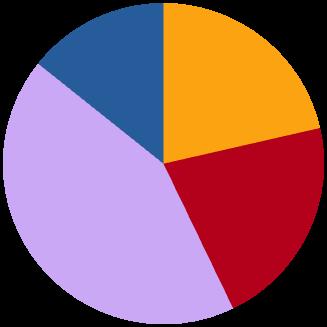
I read somewhere (watched a TikTok) that Jolly Ranchers work as cough drops, so that

Leah Kohler ’28
The cheapest ones from CVS Emma Carmichael ’26









Story and Photo by Ava Shafer ’28 Design by Clare Pacella ’28
Watching performative males in the wild is a fascinating experience. Their keys jangle on their belt loops, tote bags drape over their shoulders, and in one hand, there is always a drink. To a performative male, a drink is more than staying hydrated: it is the key to his identity. It’s a conversation starter (“Wow, I love my matcha with oat milk, too!”), a prop while he is deep in thought about his feminist literature, and a great accessory to keep his hands occupied when his tote bag is full of Faye Webster and Clairo records. The drink completes the look.
I have always assumed that performative males didn’t actually like their drinks. They just tolerated it for the look. But could it be possible that they genuinely enjoy them? I decided to find out. I tried a few drinks that I think fit into the performative male drink category to answer the question: Is the taste worth the aesthetic?
Matcha from Eleva

I had to start off with the classic. I might be a little biased because I genuinely like matcha with oat milk, but I can see why this is a performative male staple. The unique bitter and slightly sweet combination could consequently make anyone feel complex and unique. They know what they are drinking with this one. The shade of green is an instant accessory. It made my dull outfit a little more put-together. Did I feel special ordering it? Yes. Yes, I did. Even though it is gaining popularity, I did feel special being the only one to drink a green drink in the cafe.
Ratings:
Flavor: 4/5
Aesthetic: 5/5
Worth the Aesthetic: YES.
Chai from Column 15
I’m traditionally a chai girly, so I can understand the appeal. However, Column 15’s chai was unexpectedly aggressive. Perhaps the spice combination was off or something, but it left a burning sensation in the back of my throat. I never thought I would say this, but that chai was spicy. If performative males are drinking this regularly, they’re stronger than I thought. Maybe that’s the performance.
Ratings:
Flavor: 2/5
Aesthetic: 3/5
Worth the Aesthetic: Ehhhh … from other places, yes. From here, no.
Kombucha from Target
Drinking kombucha isn’t inherently performative; however, when men take care of their gut to impress women, it becomes performative. This was my first time trying kombucha, and I got the Health Ade Kombucha in the flavor Pink Lady Apple. The first few sips kind of surprised me; it was very fermented. A fermented drink tasted fermented … very surprising, I know. But the more I forced it down, the more it tasted like apple juice. The glass bottle adds a unique element to my desk while I work. Aesthetic? Well, yes. With a combination of an okay taste with health benefits, I would say this is a great drink for the performative males!
Ratings:
Flavor: 3/5
Aesthetic: 4/5
Worth the Aesthetic: Yes, go heal your gut, king!
Flat White from Hohl
As a new coffee drinker, I was excited to try flat white (with oat milk, of course). The art was Instagram-worthy, Hohl is a small business, and the drink was aesthetic. It was the performative male trifecta. As for the taste … it was just okay. Coffee is coffee, even with steamed milk. It was a good dose of caffeine, so I’m sure it keeps performative males awake to formulate their next Instagram photo dump.
Ratings:
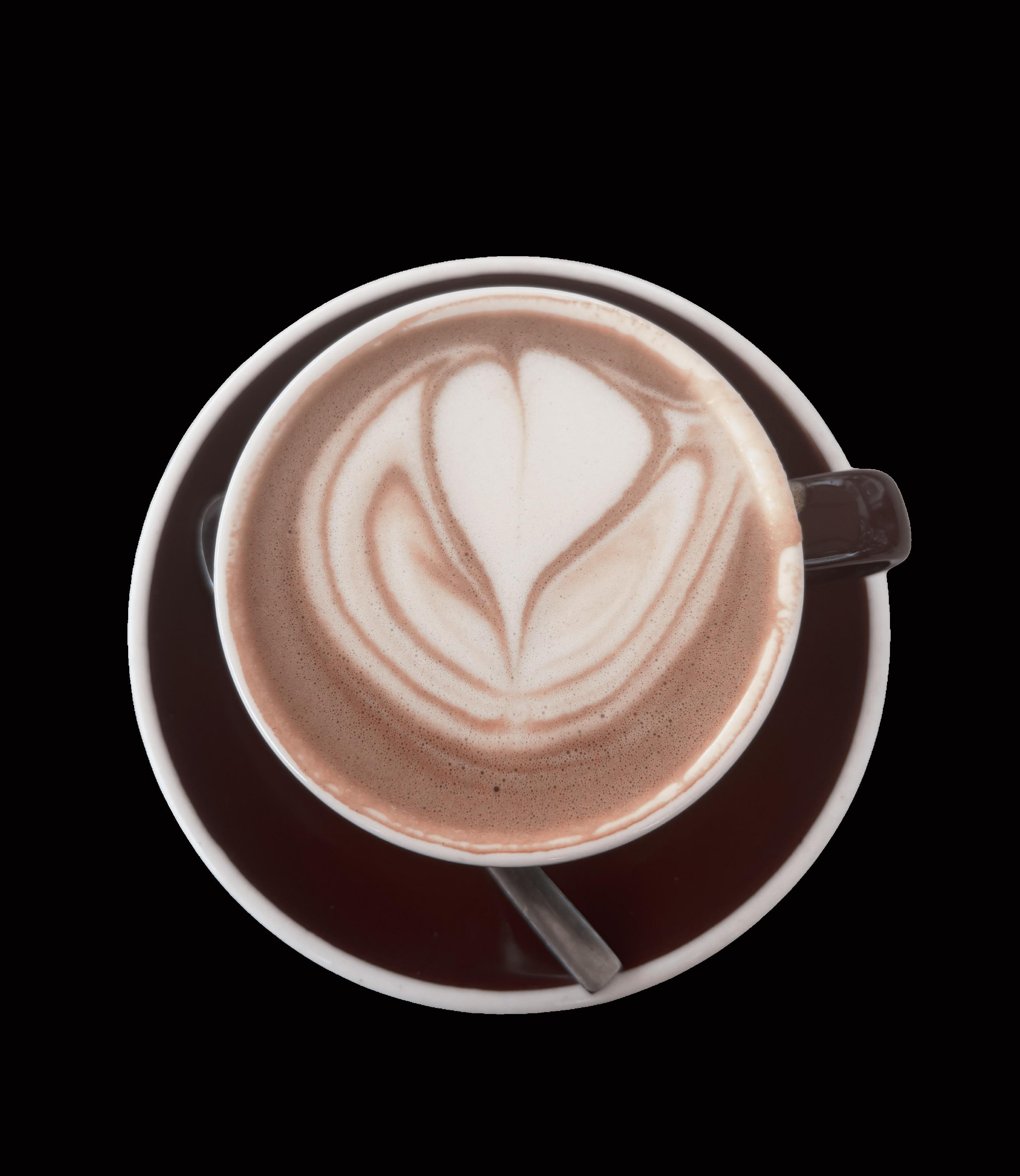
Flavor: 3/5
Aesthetic: 5/5
Worth the Aesthetic: Sure
Chamomile Tea Made at Home
This was totally made at Sadler, but it has the same effect. Now thinking about it … a performative male that is ‘committed to the bit’ would use loose-leaf tea to make it himself. The tea itself was fine. I’m not a tea connoisseur, but it was very herbal and kind of sweet (maybe that’s just the brand, though). The aesthetics were not great. I’m sure they can find a 20-ounce Yeti Rambler or a thrifted clay mug to have their tea in.
Ratings:
Flavor: 2/5
Aesthetic: 2/5
Worth the Aesthetic: No, but I’m sure they could make it work.
Performative males may be onto something. Their drink choices might be questionable, but the aesthetics are there, and it clearly makes them feel good about themselves. I get it; there is something powerful about having a drink that can say something about you, a drink that makes one look like they read poetry under a tree, listen to Laufey with wired headphones, and have strong opinions on thrifting. Are performative men’s drinks over the top? Yes. But do they work? Also, yes. No matter how much I joke, I still feel cooler with the matcha in my hand. At the end of the day, maybe we are all performing with our aesthetic beverages, trying to look more interesting than we actually are.
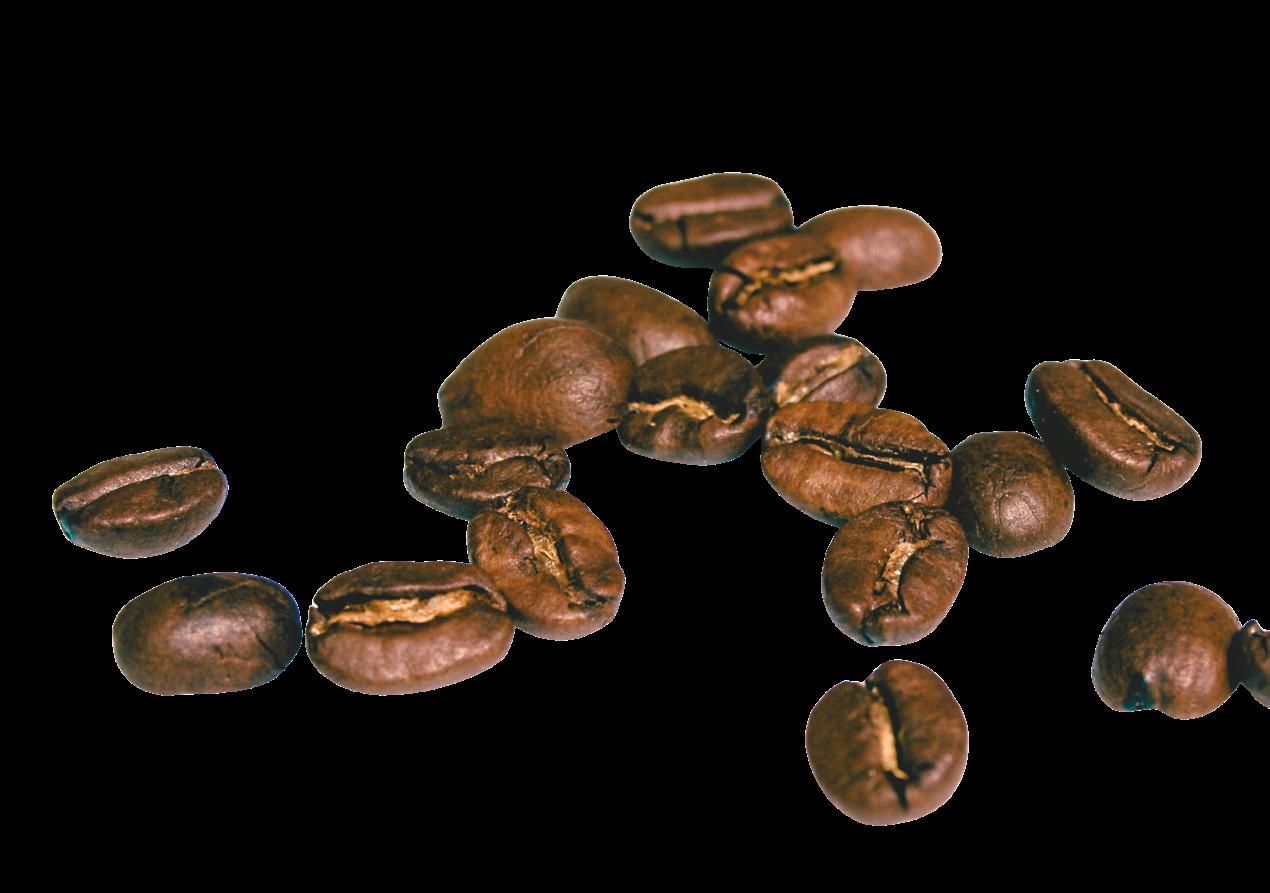


This entire saga began in August, when Devaughn Henry ’28, the class of 2028 president, announced an event celebrating Williamsburg’s title as the Pancake Capital of America. These events, the Williamsburg Pancake Trail and Pancake Festival, piqued our interest. As seasoned breakfast enthusiasts, we saw this as a chance to further explore the options our town is supposedly known for.
Our excitement led us to sign up for the first step of the process online: The Williamsburg Pancake Trail. We encouraged our friends to sign up as well but to no avail; no one else was quite as excited as we were. However, we didn’t let their extreme negativity get us down, and we quickly mapped out the best way to participate in the Pancake Trail.
Essentially, the Trail was a game where participants could earn points by going to different pancake houses. Pancake enthusiasts could use the points for tickets to the Pancake Festival or a free T-shirt. We deliberated for a while on which pancake house we would go to before landing on Astronomical Pancake House, due to its 20% discount and the rumors of astronomically large pancakes.
We set off early the following morning to Astronomical. The restaurant was down Richmond Road a ways, and contrary to our assumptions, was not space themed. Rather, it had the quaint look — with its flowered wallpaper, wooden tables, and paper Virginia placemats — that just felt so characteristically Williamsburg, and it created an incredibly loving and welcoming atmosphere.
Astronomical had an incredibly large selection of pancakes to choose from, ranging from a fallthemed apple one, to banana ones, to chocolate chip pancakes. However, we both decided on fruit pancakes. Leah got the berry ones — plain pancakes topped with whipped cream, strawberries, blackberries, raspberries, and blueberries — while Anna got simple blueberry pancakes.
When the pancakes came out, they far exceeded our expectations. Each plate had two pancakes larger than our heads. The pancakes were incredibly fluffy, and, paired with the complimentary syrup, they definitely were an indulgent breakfast. Despite coming in determined to finish the whole stack, neither of us was even able to finish one. Ultimately, we decided that, if we were going to come again, it definitely would be in our best interest to split a stack.
After utilizing our 20% discount, we collected our 3 points from our visit to Astronomical and drove over to the Visit Williamsburg headquarters to redeem them on the Pancake Trail T-Shirt. When we got there, however, the workers seemed rather confused by our enthusiasm, but after we showed them that we had enough points for the T-shirt, the workers led us over to a woman who told us that we were the fourth and fifth participants to pick up the shirts. We suppose our enthusiasm got the best of us.
Unfortunately, we were not able to visit as many pancake houses as we initially set out to accomplish. However, the free T-shirts are not where our story ends.
It picks back up three weeks later at the official Williamsburg Pancake Festival located at the Hellenic Center. While it did require a short drive and subsequent struggle to find a parking spot, we walked in to find a college student’s heaven: free things.



Immediately upon entering, we were asked whether we wanted a free pair of Williamsburg Pancake Festival socks or an engraved ‘Visit Williamsburg’ spatula. We both chose the socks, not just because of how cute they were, but because of our current (and sometimes quite frustrating) lack of a non-communal kitchen.
We then made our way to the large community space where the walls were lined with local vendors sharing their favorite breakfast goods. Whether you prefer pancakes or tend to lean towards more savory options, there were many things to choose from. We tried everything we could, including pancakes, sausages, and grits. It was delicious and a welcome break from what would have been awaiting us at the Sadler Center if we had decided to eat dinner with our non-breakfast enthusiast friends.
Our last adventure at the festival was decorating pancakes with chocolate chips, marshmallows, and sprinkles at a station that was clearly meant for children much younger than our 19-year-old selves. Despite that, it was a fitting conclusion to a fun night of breakfast for dinner.
This event was a two-day affair. The next morning’s festivities began with a sausage dog race, which, unfortunately, neither of us was able to attend. However, we met up just in time to witness the pancake-eating competition hosted by Major League Eating. It featured some of the nation’s top eaters, including Geoff Esper (No. 3), Miki Sudo (No. 5), and Nick Wehry (No. 7). Esper took home the top prize, setting a new world record in the process. If you are feeling hungry, you can challenge him for the most pancakes eaten in 10 minutes by eating more than 35. While the competition was not something we ever anticipated watching, it was quite a fascinating experience.
Overall, it is safe to say that we greatly enjoyed the First Annual Williamsburg Pancake Festival and are looking forward to dragging more of our friends along with us next year.
The moral of the story: read your class newsletter.






“The Subway” by Chappell Roan Anna Dehmer ’28

“Sue Me” by Audrey Hobert Grace Ki Rivera ’26

“Bluest Flame” by Selena Gomez Molly Drew ’26
“Zip Up My Fly” by Malcom Todd Grace Ki Rivera ’26

















Story by Harrison Kuehl ’27
Design by Portia Dai ’26
The Axe Republic axe-throwing bar is a great place to kick back and have a great time. After they generously offered the Flat Hat Magazine staff an axe-throwing experience, I saw first-hand how entertaining and enjoyable axe-throwing is! The bar has a very laid-back setting with good vibe music (many songs I even have on my playlist), perfect for letting off steam after a busy week. Once we got to the bar, one of the owners, Lydia Mae, along with her staff, escorted us to our target range. Not only were they some of the nicest people you’ll ever meet, but they also offer free tutorials on how to play. It can be a bit tricky at first, but after getting the hang of it, my group and I had a blast! Additionally, when
I sampled the food, their pretzel bites exceeded my expectations. I originally imagined the standard baseball game pretzels and nacho cheese, but the food was very well-made, hot, and the cheese sauce was top-tier quality. With an enjoyable atmosphere and great food, I highly recommend others to check it out, especially on Thursday nights when college students get a 15% discount and a free appetizer! Overall, it is, without a doubt, one of the hit spots for students at the College of William and Mary, a spot where you can take a breather from endless amounts of schoolwork by taking a break and throwing axes with friends. When you go, tell Axe Republic’s Marty the Moose that Flat Hat Magazine sent ya!



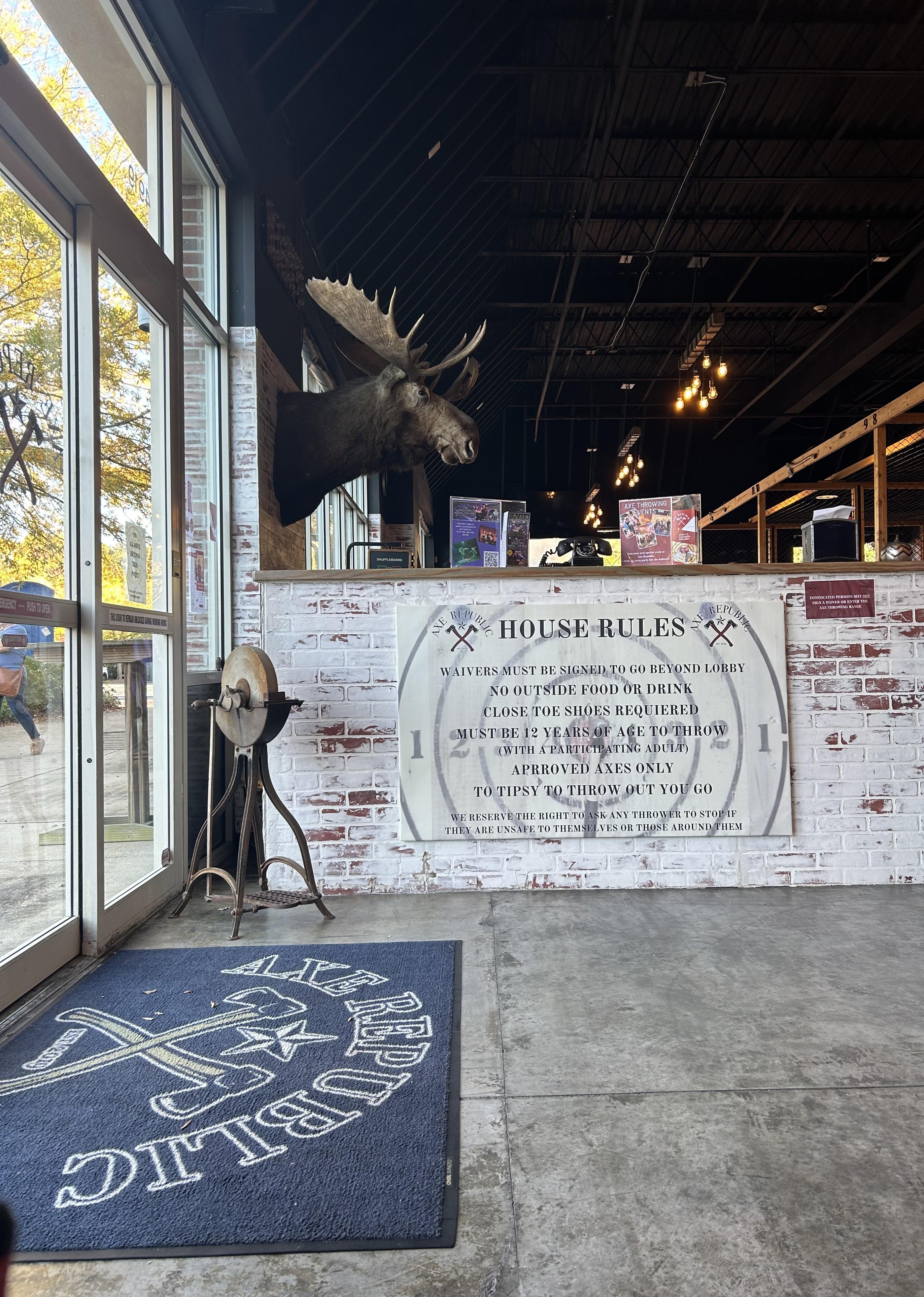

Produced by Hannah McMinn ’26
Style by Charlotte Muller ’28
Photos by Kira Fishey ’26
Design by Anna Dehmer ’28
Modeled by Emerson Shultz ’26


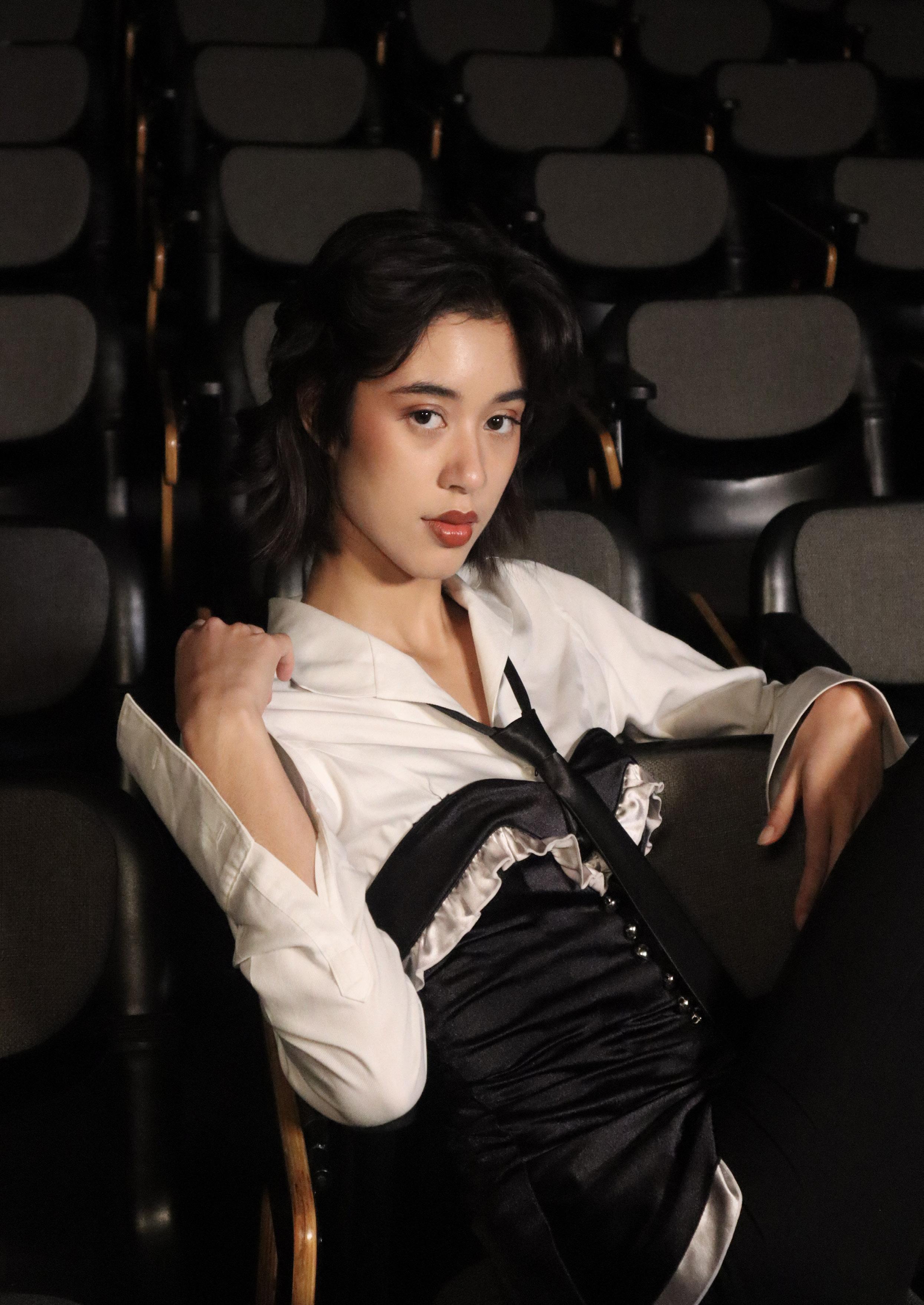




We are looking for writers, page designers, copy editors, videographers, graphic artists, style editors, web designers, models, business editors, photographers, and more! If you’re interested in joining our team, scan the QR code for more information about how to get involved for our Spring 2026 issue.








Story and Design by Leah Kohler ’28
One year, four months, and 23 days ago, I graduated from high school alongside 143 people with whom I grew up. Coming from a small town, there was never much turnover. People occasionally came and went, but, for the most part, I had seen the same faces every day of every year of grade school. I always knew what to expect, both academically and socially.
When I finally walked across the stage at graduation, it occurred to me that, in a few short months, I was going to have to start over. I was moving states away from home and the life I had always known. I was starting school with hundreds of faces I had never seen beyond the Class of 2028 Instagram page. And that was a scary realization. For as long as I could remember, the first day of school was effectively a continuation of the previous year. Now, it would actually be the first day of something new.
As move-in day crept closer, I tried to push the thought of change out of my mind. I didn’t know what to expect, so the next best thing was to try not to expect anything at all. However, that was easier said than done for an overthinker watching the ‘Countdown to Orientation’ posts come across her feed each day.
All I know for sure is that my overthinking did nothing to help my anxiety as I stepped onto campus, and it did even less as I stepped into my first college lecture: Introductory Biology. Love it or hate it, everyone has heard its reputation, but that didn’t make me feel any less alone. I found a seat close to the back and watched other people talk to their friends as I felt my heart beating out of my chest.
Not much happened that first day, but as syllabus week ended and the semester truly began, I felt the imposter syndrome grow. Both in Introductory Biology and General Chemistry, it was like a whirlwind of information was hitting me all at once. Everyone else seemed to understand what was happening, but I couldn’t even figure out how to keep up with my notetaking. I won’t say that high school was always a walk in the park, but I had never felt more behind or more unsure of my own abilities. It was almost as if I had missed a critical ‘How to College’ class that the rest of the campus knew all about.
The first round of midterms came and went alongside quite a few late nights and the help of many online resources. As I looked at test scores I
wasn’t used to seeing, it was easy for me to question whether or not I actually belonged at such an academically rigorous university. However, I will say, if anything good came out of that week, it was that it was one of the first times I realized that I was not alone in experiencing imposter syndrome. Almost everyone has moments where they don’t feel as though they are good enough to live up to the competition and pressure of higher education.
Experiencing imposter syndrome seems to be a cornerstone of academic life at the College of William and Mary, treated as a rite of passage to get your degree. The more you look around, the more you see it. Yet, the only place it is openly discussed is YikYak, a platform where anonymity creates a feeling of safety. However, being honest with your friends and peers is nothing to be ashamed of. In fact, it helps you find a community that is built on support instead of comparison, a community that I am lucky enough to have found over the last year.
As I worked through the remainder of my first semester, and eventually my freshman year, I can’t say that my mindset miraculously changed or that I became confident in my place on campus. I still find myself wondering how I ended up at the College more often than I’d care to admit. Whether in the middle of a stretch of exams or building up the motivation to begin a long day of classes, doubt finds a way to sneak forward. Those are the days that I have to try even harder to remind myself of how hard I have worked and all that I have accomplished.
My goal in writing this article is to remind not only myself, but also everyone reading, that we are not alone and that doubt is, unfortunately, a part of being human. However, it doesn’t negate our worth and the good that exists around us.

We asked Flat Hat Magazine staff what their greatest performance is to date. They answered — enjoy the show.
I played “The Saints Go Marching” to secure my recorder karate black belt.
-Leah Kohler ’28

I played “Chopstix” (but a slightly more advanced version) for my elementary school’s talent show.
-Anna Dehmer ’28


I was a chicken in a Cinderella ballet.
-Portia Dai ’26





My friends and I put together a 10-minute long Hamilton mashup in an hour.
-Mali Bucher ’29
I performed “Love Story” by Taylor Swift for my elementary school talent show.
-Grace Ki Rivera ’26

I played an electric violin cover of “Jason’s Song” by Ariana Grande.
-Elizabeth Ray ’29
Pretending I’m not a TWAMP.
-Ava Shafer ’28


Story by Flat Hat Magazine Staff Design by Portia Dai ’26


Story by Susanna Carr ’29
Design by Leah Kohler ’28

I’m the furthest thing from a cheerleader, but this summer I pretended to be one.
My job was to play “the cheerleader” in Cheri Briggs’ play Into the Canvas, produced by the School of the Performing Arts in the Richmond Community. The play centers on three high school girls forced to work together on a group project. It examines the interactions between them, and each has a monologue revealing their personal experience, all of which connect to a painting featuring a single subject. I loved the concept.
I have never been mistaken for a cheerleader, and the extent of my experience was three failed gymnastics lessons when I was three years old. I was out of my depth.
They wanted me to be a cheerleader? Really? Well, I was being paid, so why not?
Sure, I was totally going to do it, but how? I’d acted before, but for the first time, I was struggling to connect with my character. The cheerleaders I’d known were nice enough, but not close friends of mine. Who was this character, and how was I supposed to portray her?
I turned to the script. At first, the character seemed typical: bubbly, energized, and perfect. But then, I found something I could relate to. This cheerleader was a transplant, struggling to be accepted by the others. My character began to question the intentions of those around her. She wanted to be friends with the other cheerleaders, but she did not believe they would accept her unconditionally. This spiral continued — would they laugh at her,
sabotage her, drop her in mid-air during a stunt? We never meet these girls, but that doesn’t matter. The experience of this cheerleader felt personal. Even though her name is not given until the end of the play, she becomes more than a cheerleader. Her identity is suddenly full of intersectionality — she is bubbly, yet anxious. Energized, yet out of place. Seemingly perfect, but truly human.
And this? This was someone I could become.
I understand her pain, and I think most people do. We all want friendships, but reaching out can seem like the hardest thing in the world. We’re all selfconscious, afraid of the judgment of some mystical figure or perfect person that will smite us if we say the wrong thing. Then, we’re left to regret and wonder what could have been, robbing us of the joy in our lives.
This role, and its message, rings true because the playwright wrote in a way that understood what it actually means to be a person. We all want genuine human connection but feel like we will never be clever or pretty or popular enough to achieve it. Even those who don’t want to be a part of the in-crowd want to be part of the antithesis of that, which is, truthfully, its own in-crowd. At the end of the day, we’re all searching for good friends. We all engage in constant comparison to the others around us, even when we know objectively that they are struggling just as much as we are. Above all, we believe that no matter what, we will never be good enough to be loved. Doubting our own intrinsic worth makes it easy to drift through life alone, withering inside.
I operate under the belief that everyone deserves love, even though many people make that exceedingly difficult. But, at the end of the day, I can’t change the actions that others take. I can monitor my response to those actions and choose to act from a place of forgiveness and love anyway. I can only hope that others extend the same sentiment to me when I am not at my best.
Because everyone deserves love and everyone, at some point, considers themselves to be unworthy of it, this cheerleader feels very real. She’s an expression of the doubts and anxiety that infiltrate our lives. She, too, struggles with intrusive thoughts that impact every interaction she has with the world. As it turns out, it was laughable to be unsure about
portraying this character. Of course, I was going to be able to relate to her. No one is solely defined by their after-school activity.
As I stood on that stage, I didn’t think that I wasn’t right for the role. She was an extension of the anxiety I’ve felt when trying to form connections with new people, and it was cathartic to get to share that on stage. It was vulnerable, but I wasn’t scared. What I did was important. Showing others that their experiences have validity is a privilege. As I delivered the final line of the cheerleader’s monologue, “She’s searching for a place to belong,” I realized that the playwright had hit on the basic need of humanity. Belonging keeps us sane and gives us strength. Humans are not robots. We need each other to prosper. Truthfully, empathy and love are what make us human. Denying anyone the opportunity to belong is anti-human.
Then why do so many of us feel alone?
Maybe we’re scared, or self-sabotaging, or hopeless. Any myriad of causes exist, but if more of us took the risk and struck up a conversation, I’m sure there would be less loneliness in the world.
I didn’t have the funniest lines or the most dramatic role, but mine was the most real. That’s part of what performance can be: a window into the internalizations we would never say to anyone else, the pain that we typically keep to ourselves, and an exploration of the nature of humanity itself. Essentially, the concept of performance itself is transformed. It turns from a fantastic portrayal of invented events to something real. Reality can be ugly and painful, but there’s beauty too. Thank


EDITORS-IN-CHIEF
Portia Dai
Grace Ki Rivera
CHIEF-OF-STAFF
Peerawut Ruangsawasdi
CREATIVE DIRECTION
Leah Kohler
Anna Dehmer
MANAGING EDITOR
Sam Belmar
EDITOR-AT-LARGE
Alex Nakamitsu
STANDARDS & PRACTICES
EDITOR
Molly Martin
DIGITAL DIRECTION
Anna Dehmer
DESIGN EDITORS
Mali Bucher
Alexandra Krasilovsky
Catherine Power
Phillip Matijevic
Ava Shafer
COPY CHIEF
Clare Pacella
COPY EDITORS
Julia Peavey
Molly Drew
Elizabeth Ray
Phillip Matijevic
Nate Ross
Ragan Tankard
Alexandra Krasilovsky
STYLE DIRECTION
Hannah McMinn
STYLE EDITORS
Charlotte Muller
BUSINESS MANAGER
Harrison Kuehl
WRITERS
Emma Carmichael
Elijah Clark
Melania Frye
Aamnah Malik
Katira Ahmed
